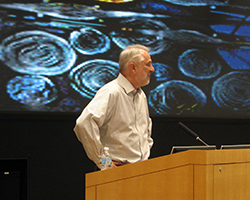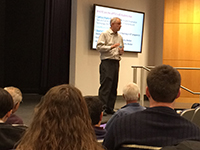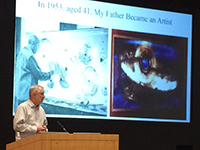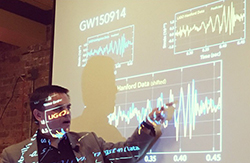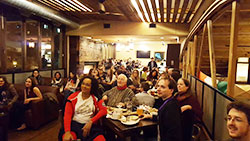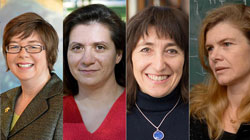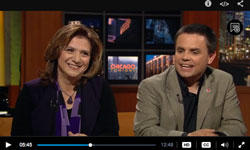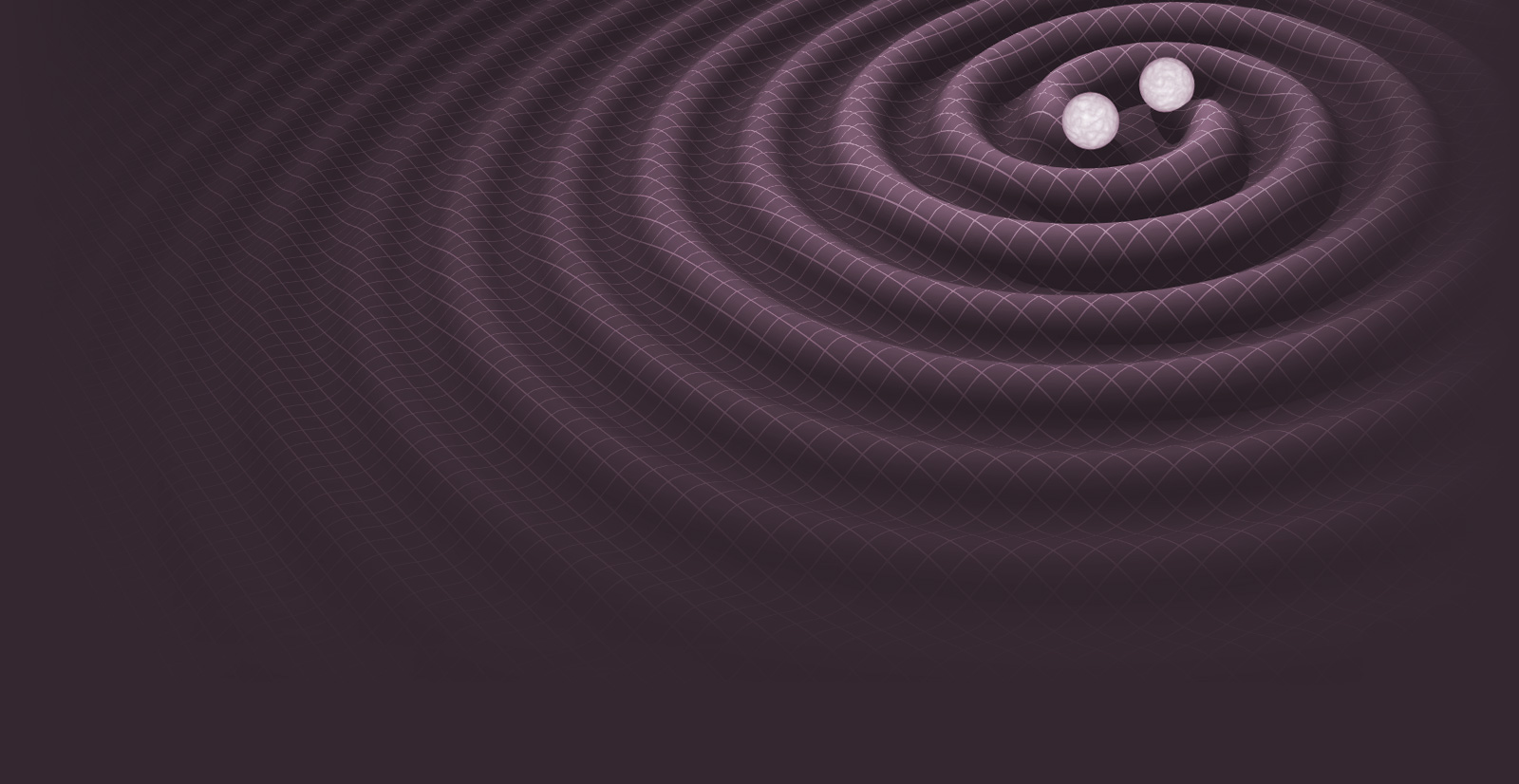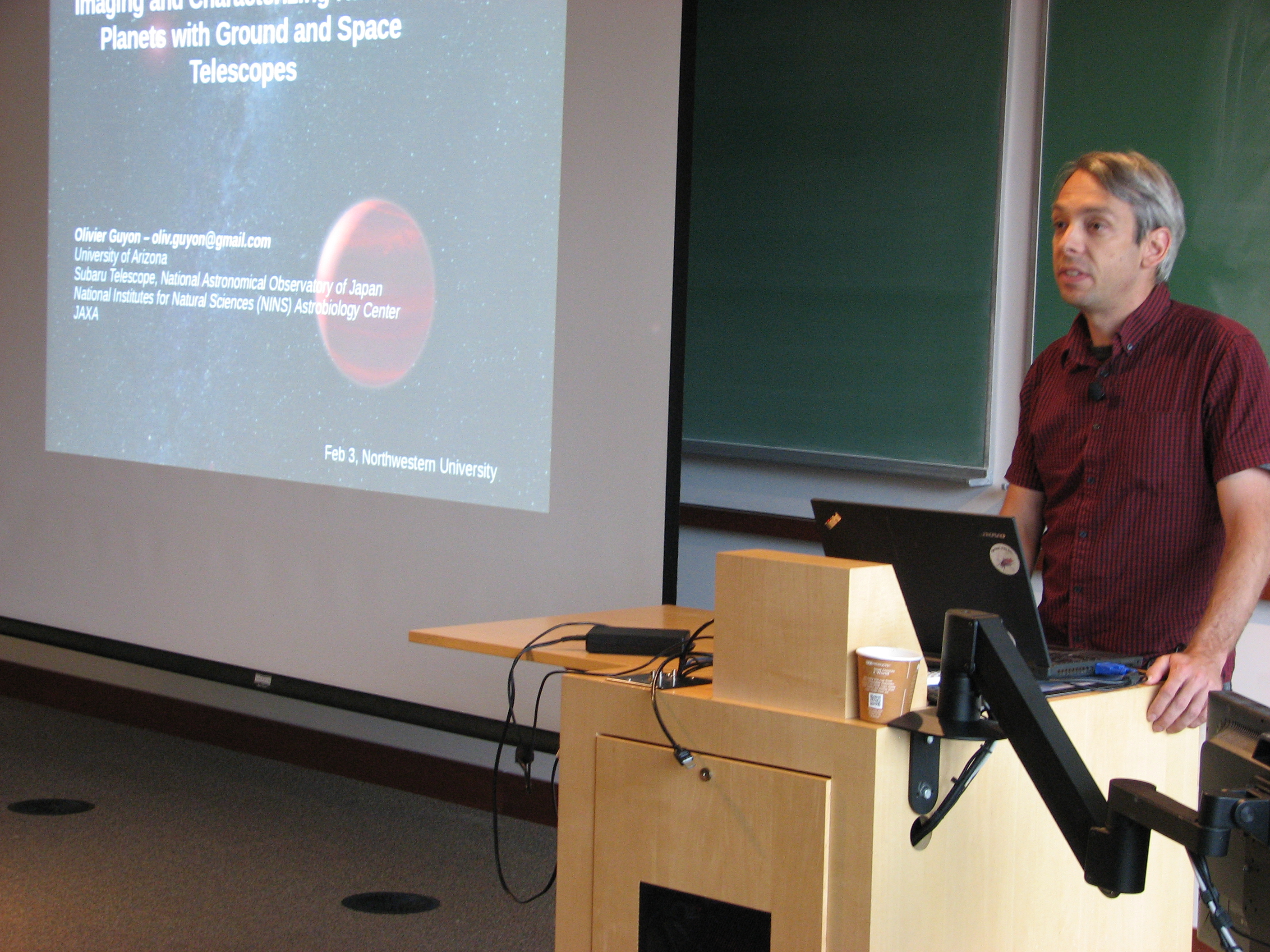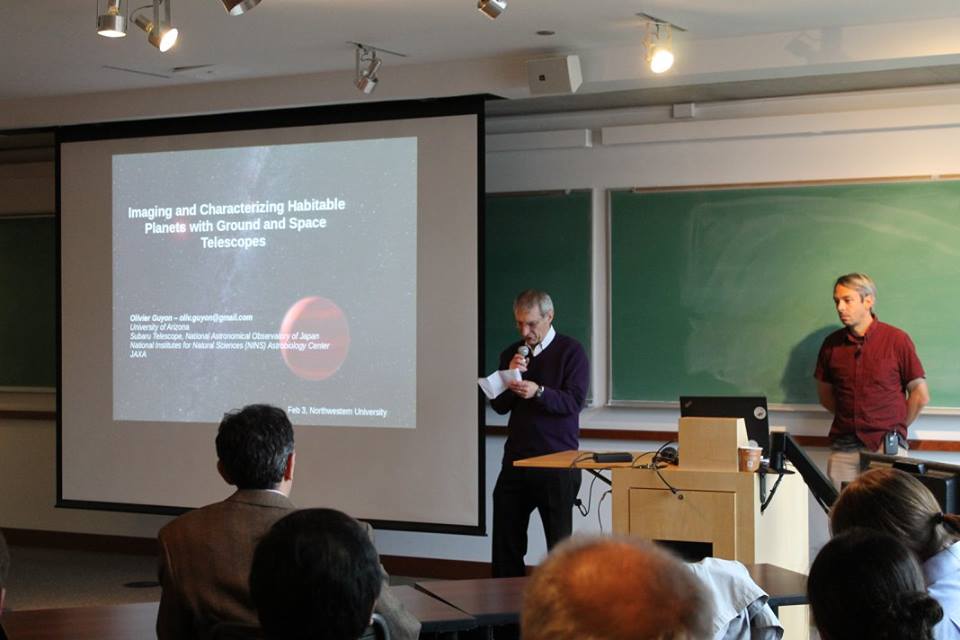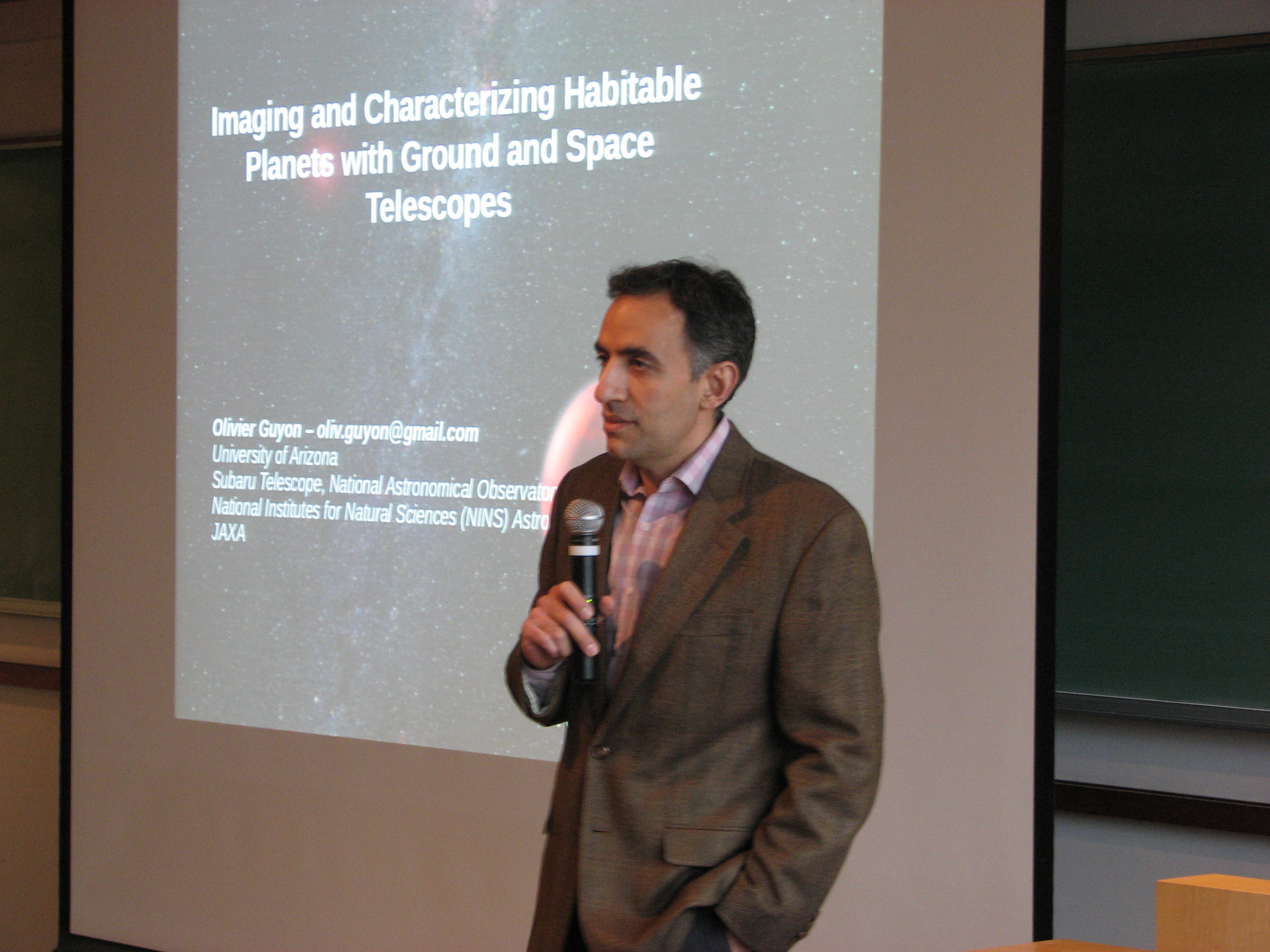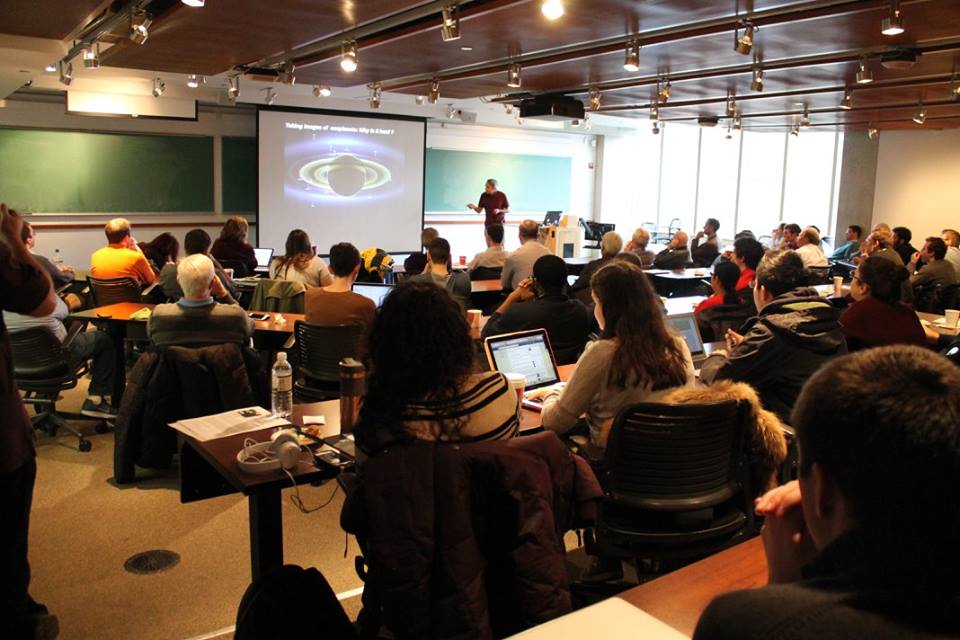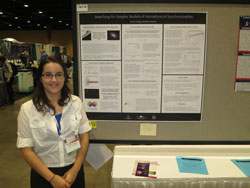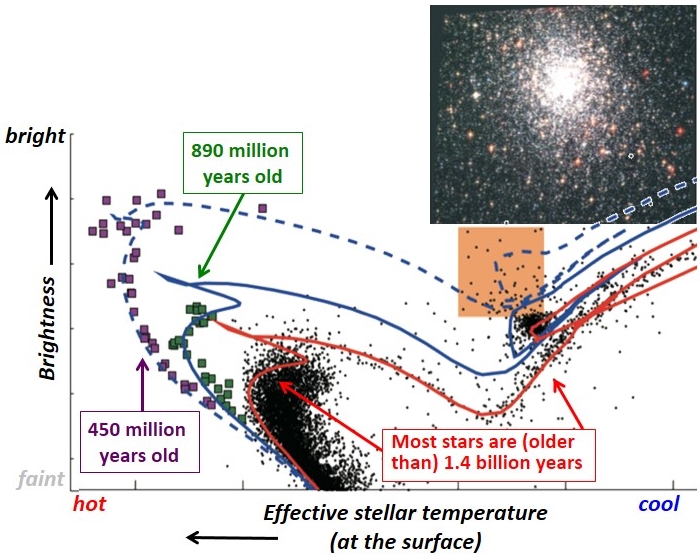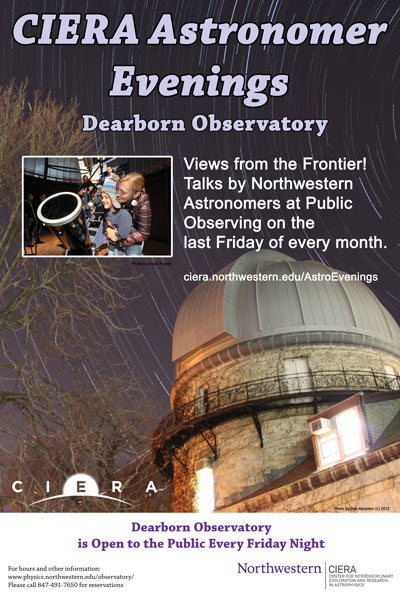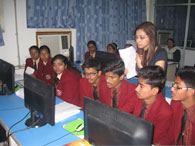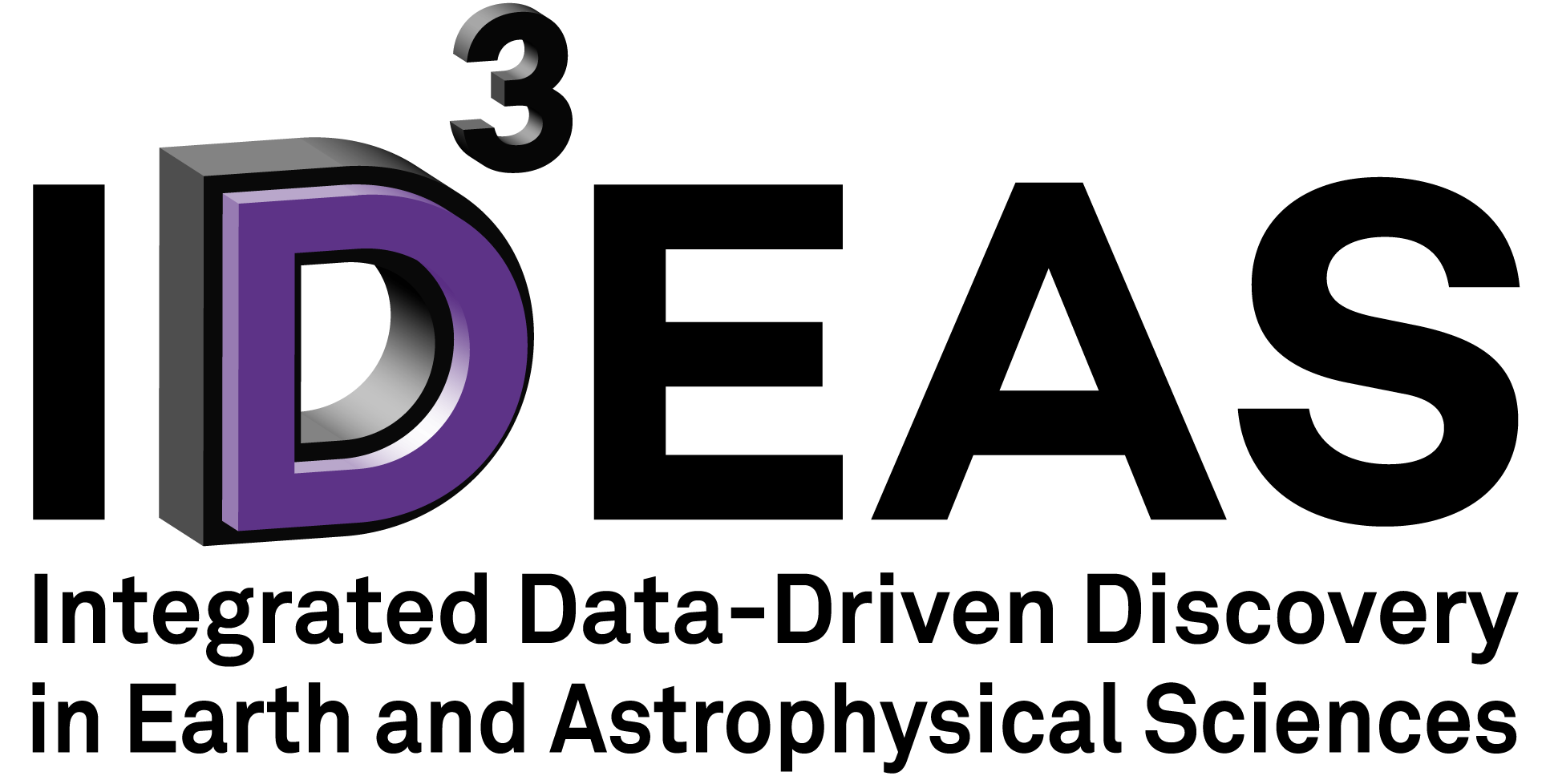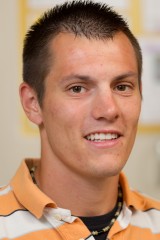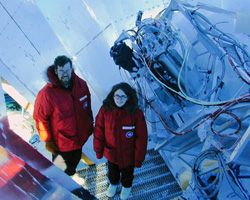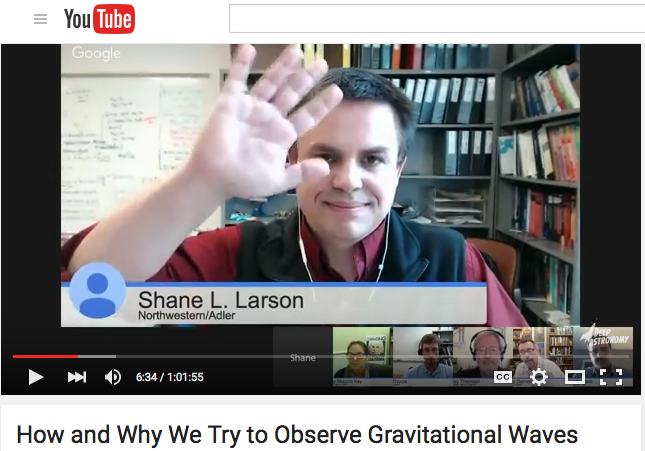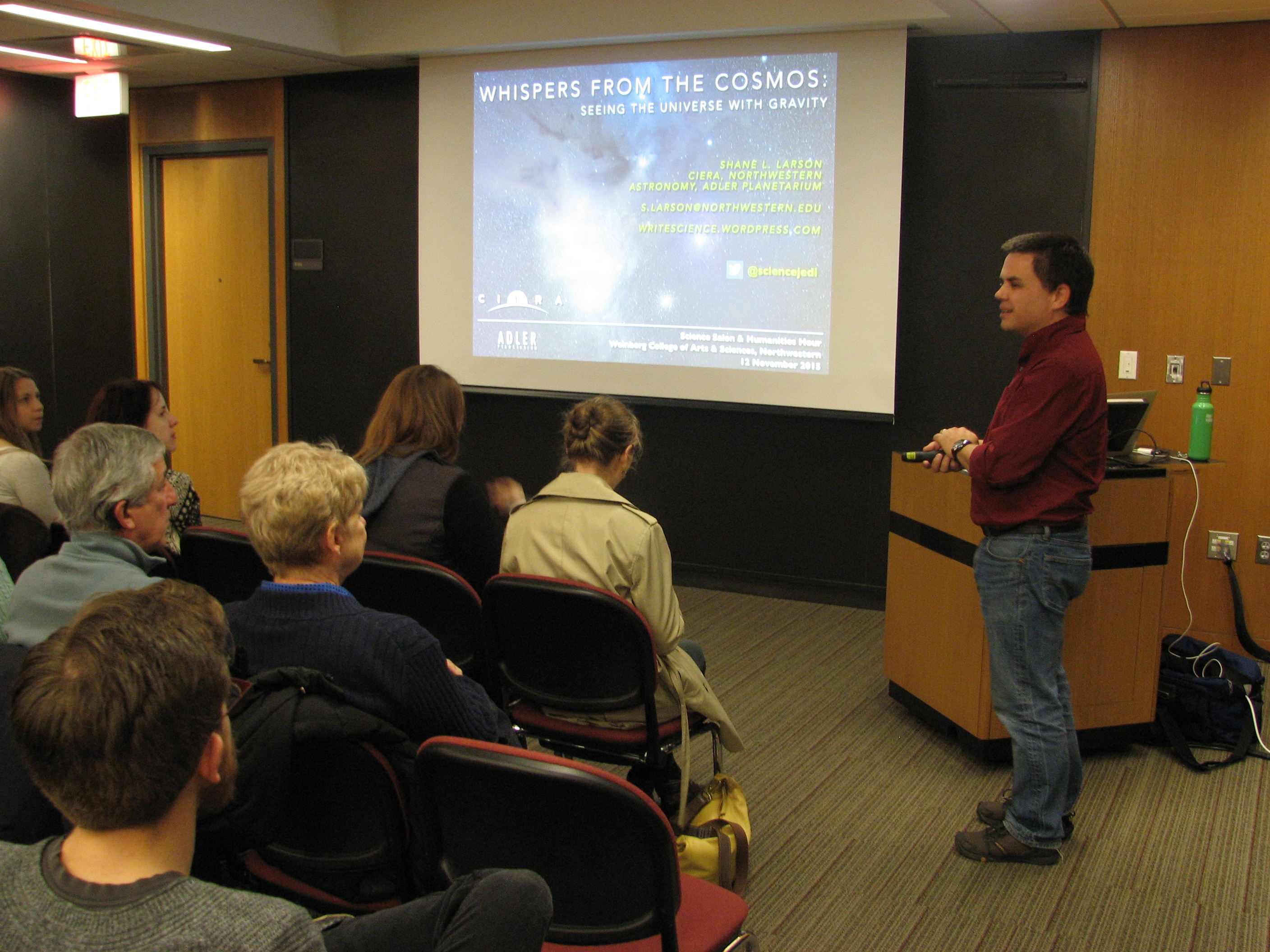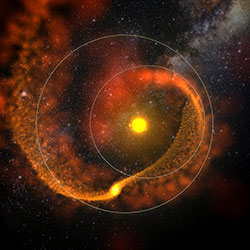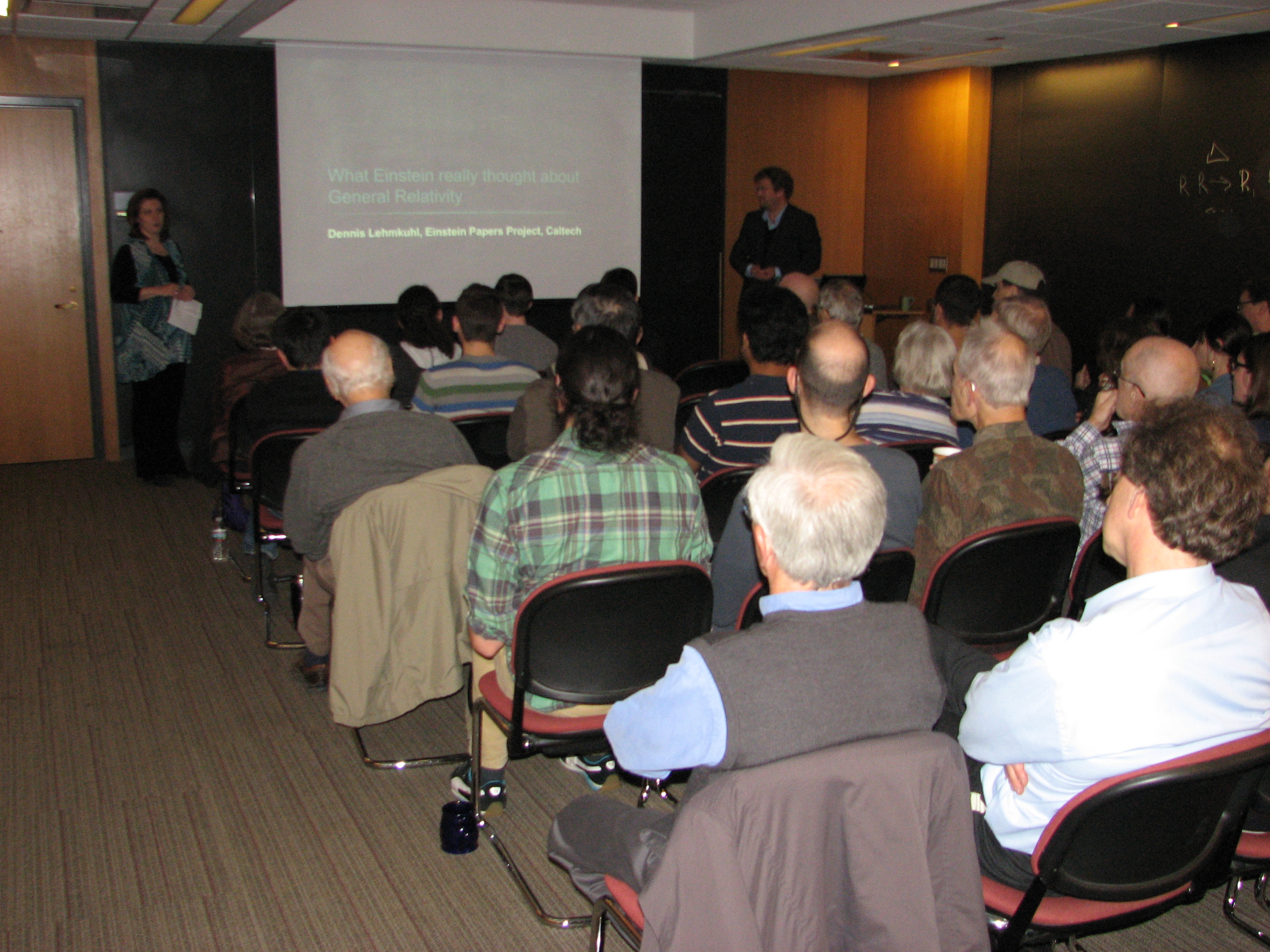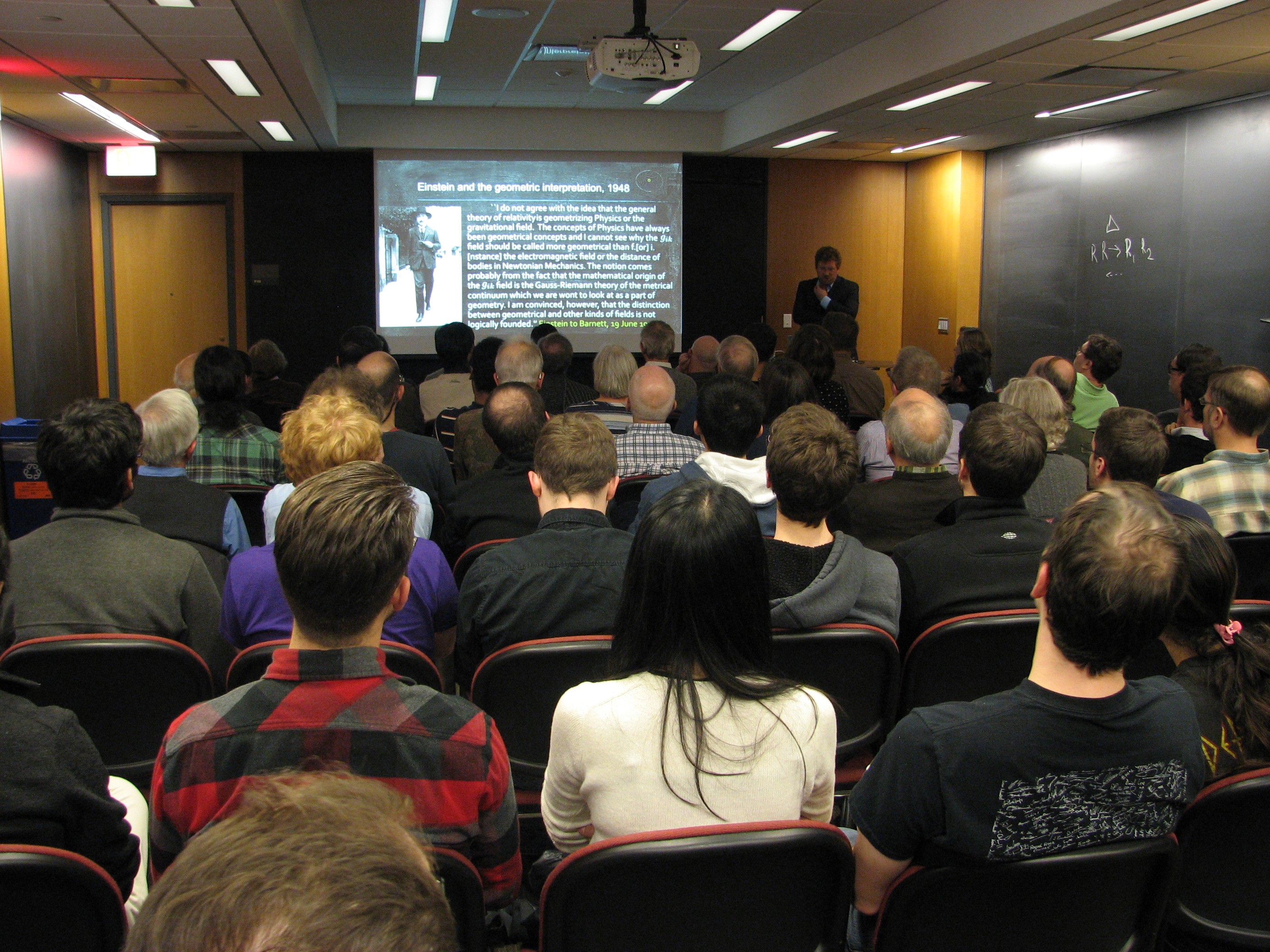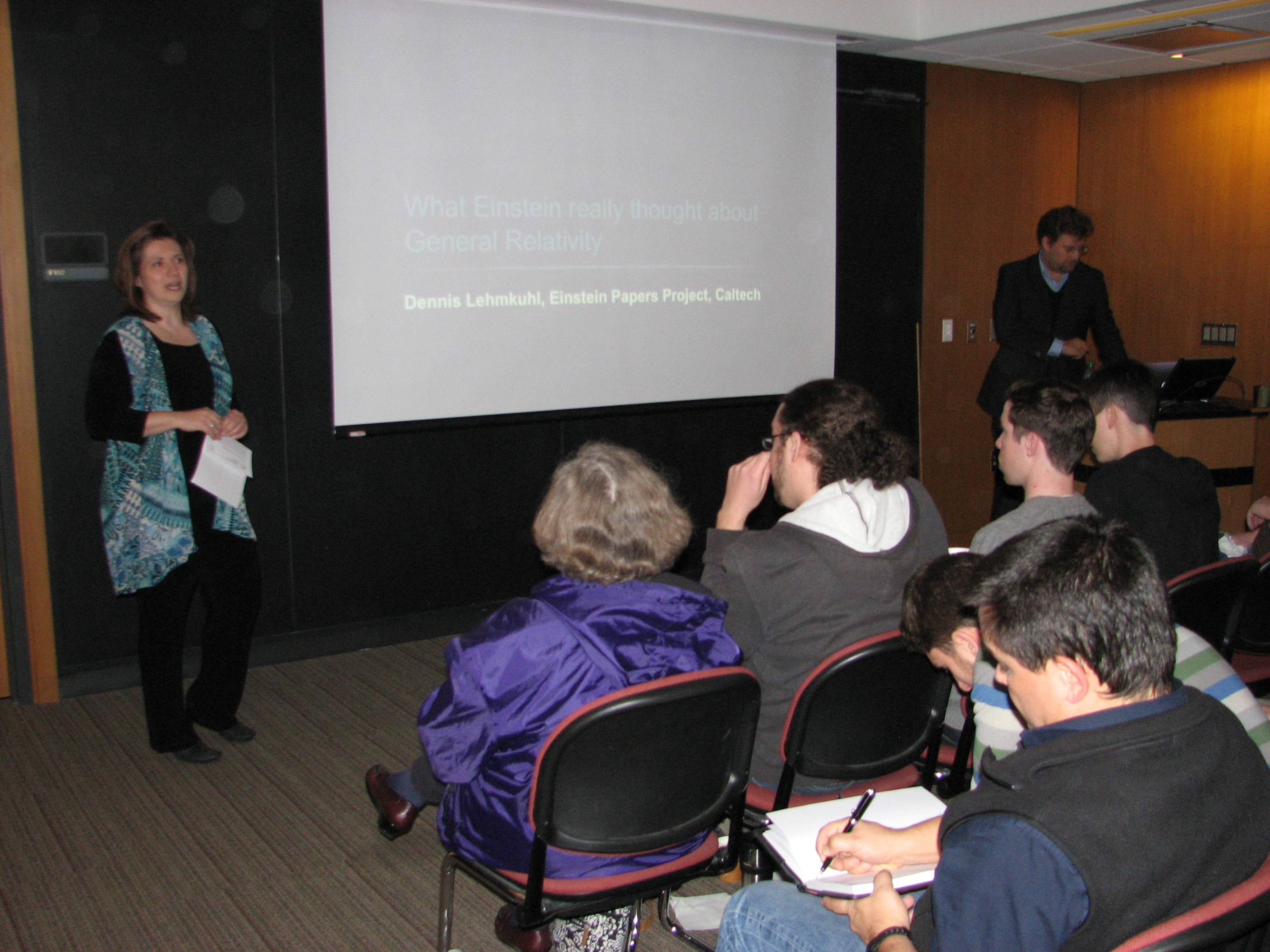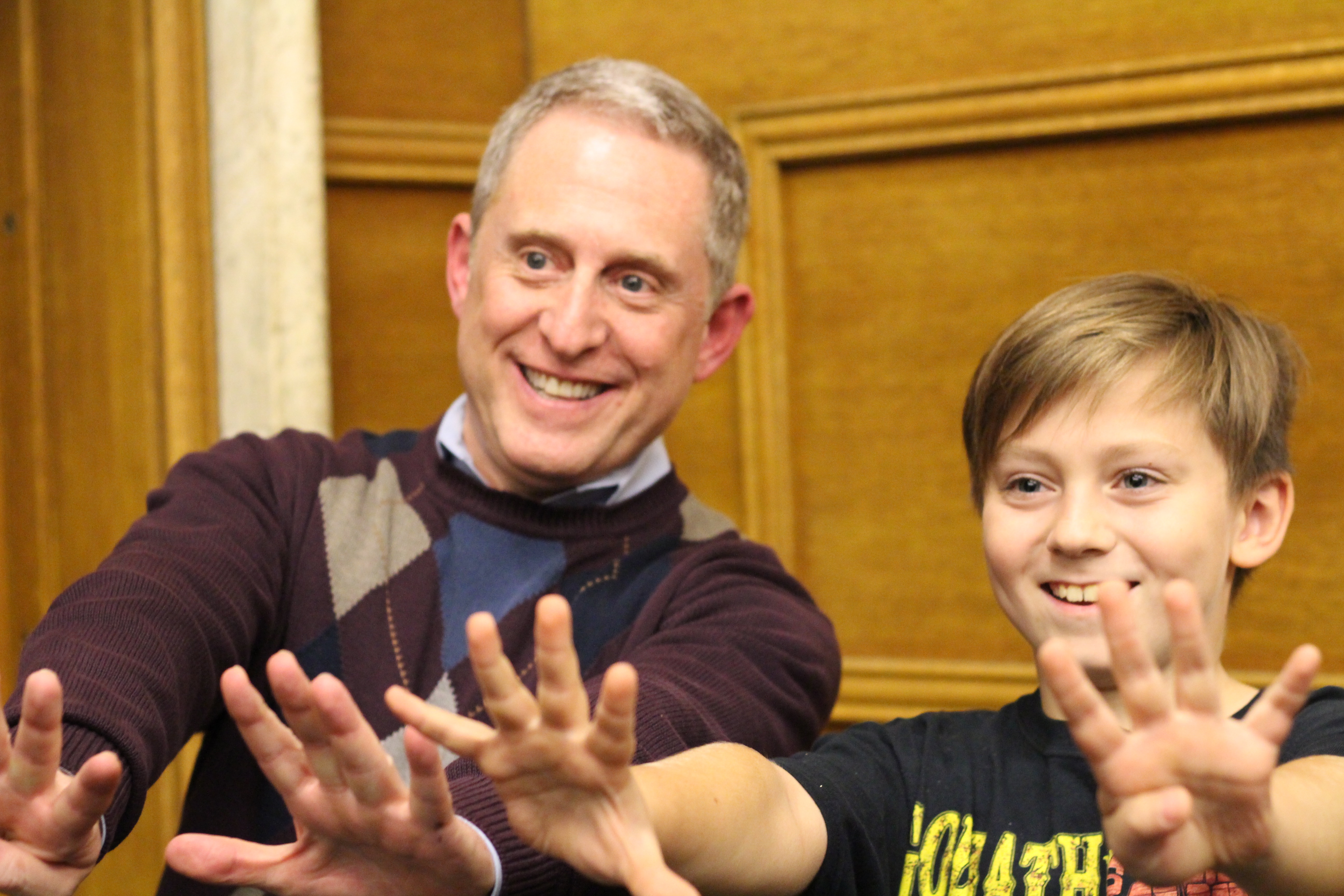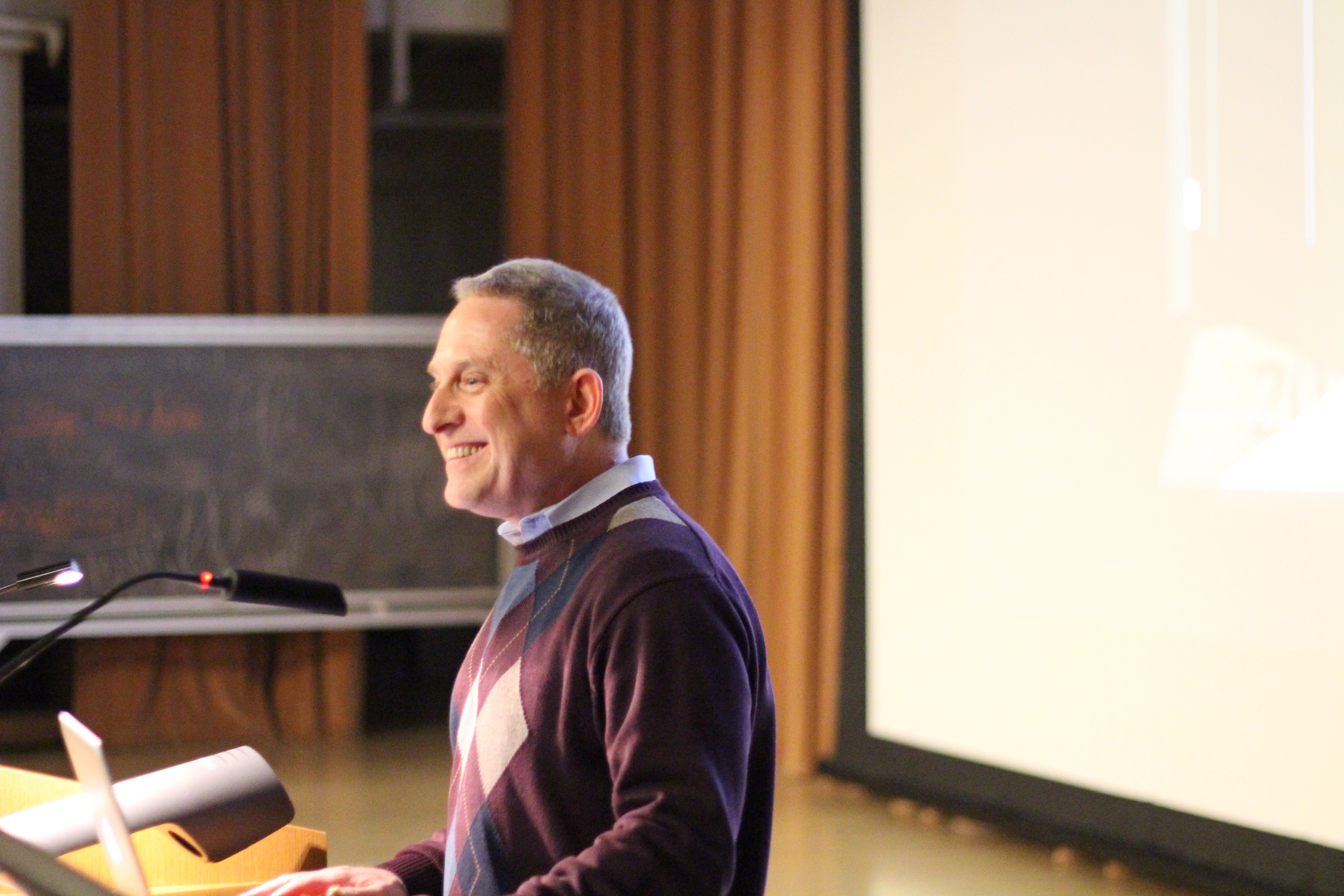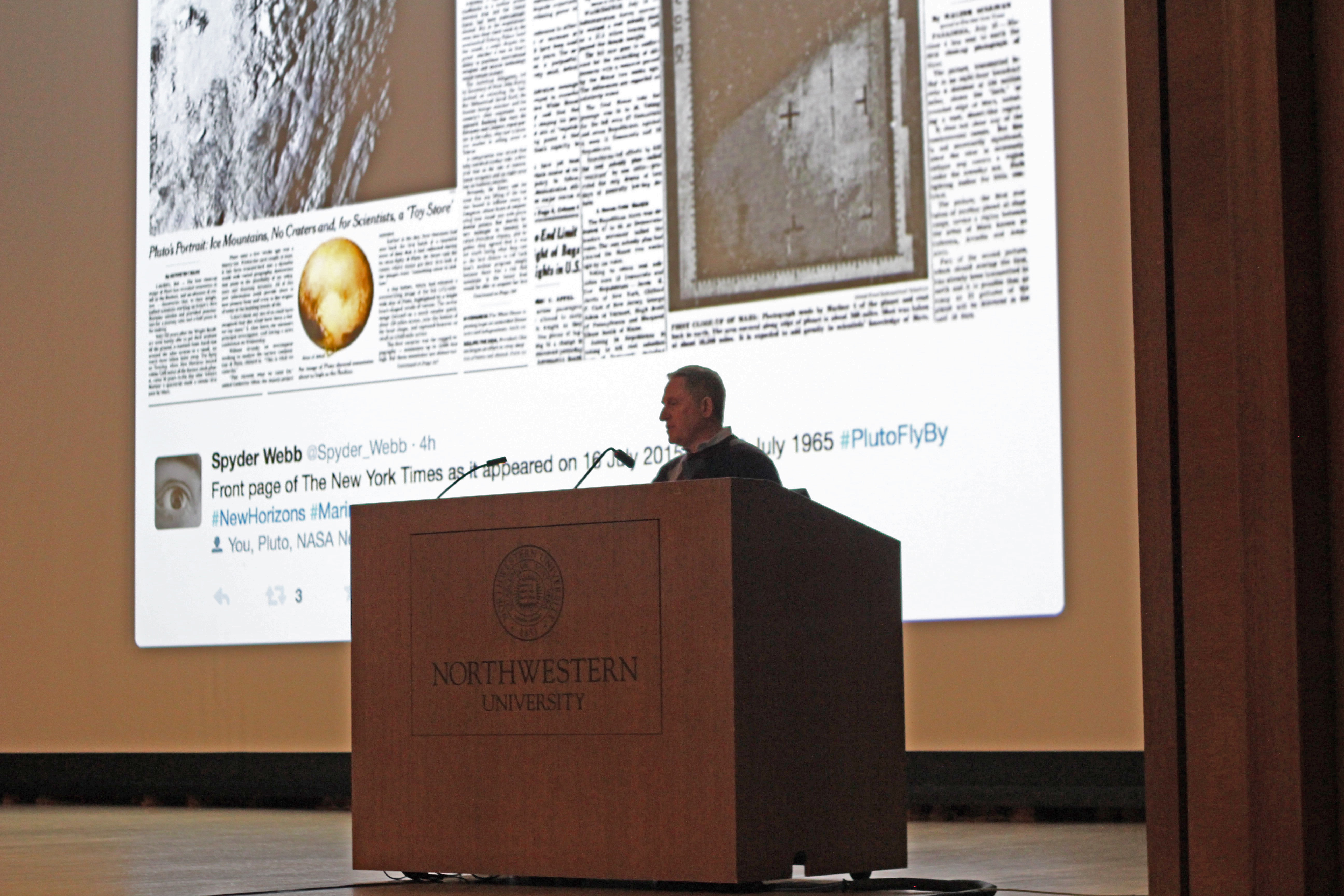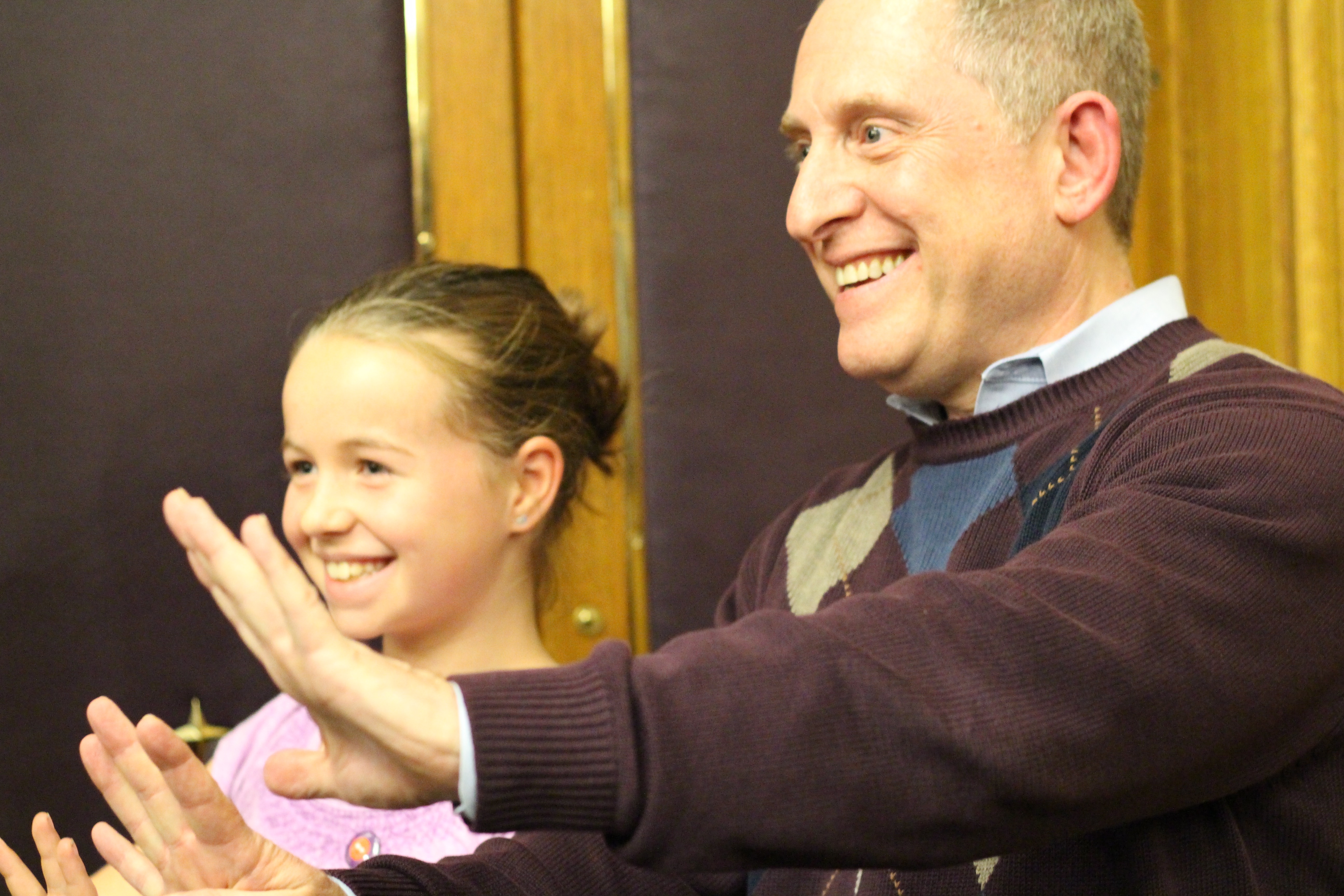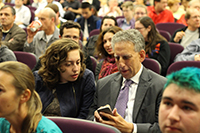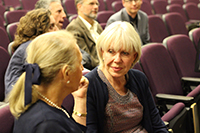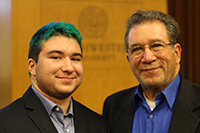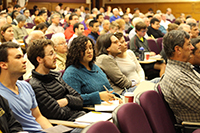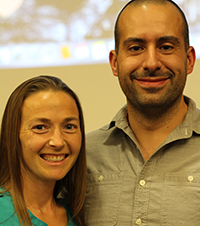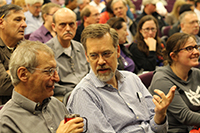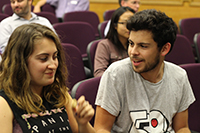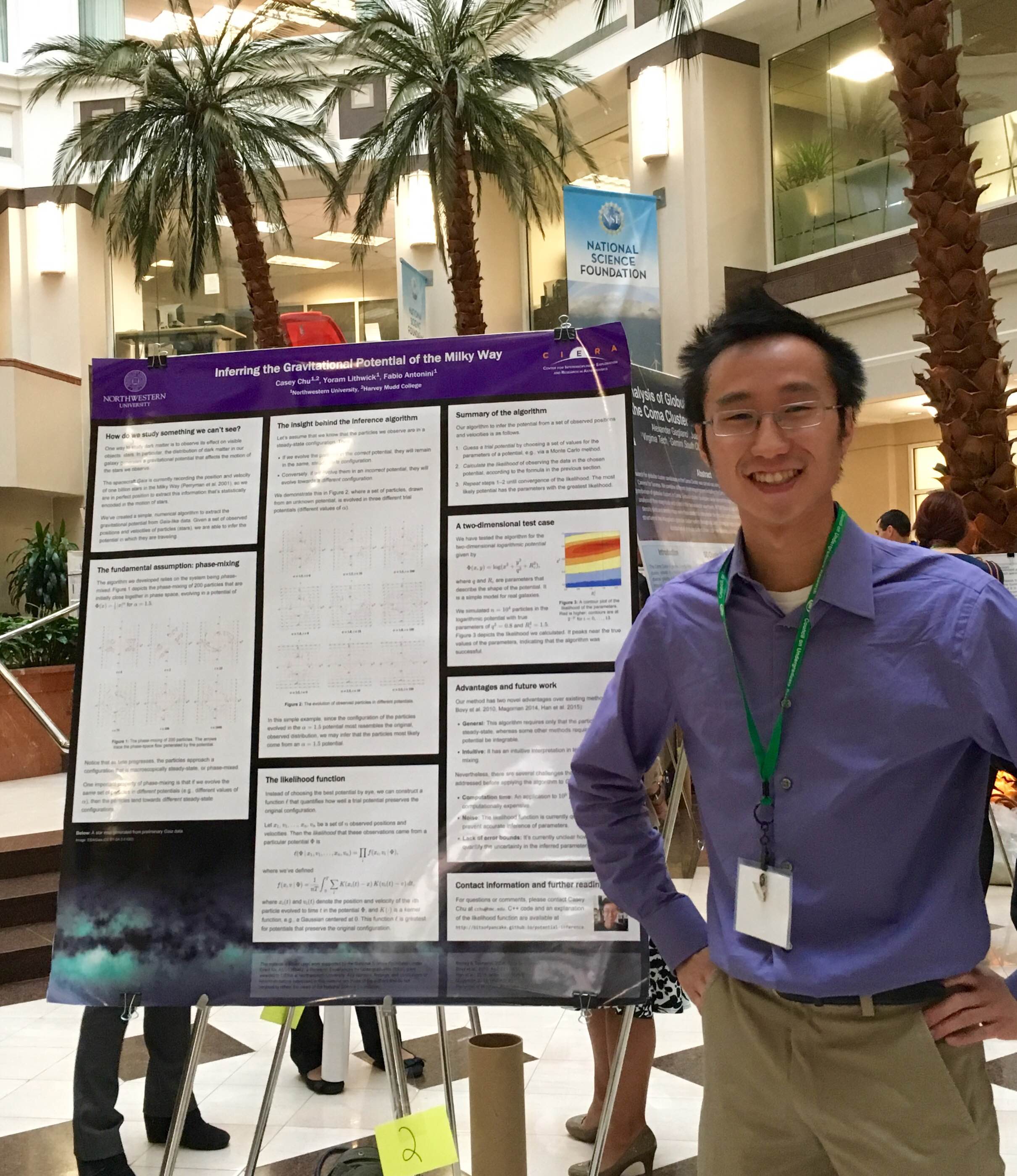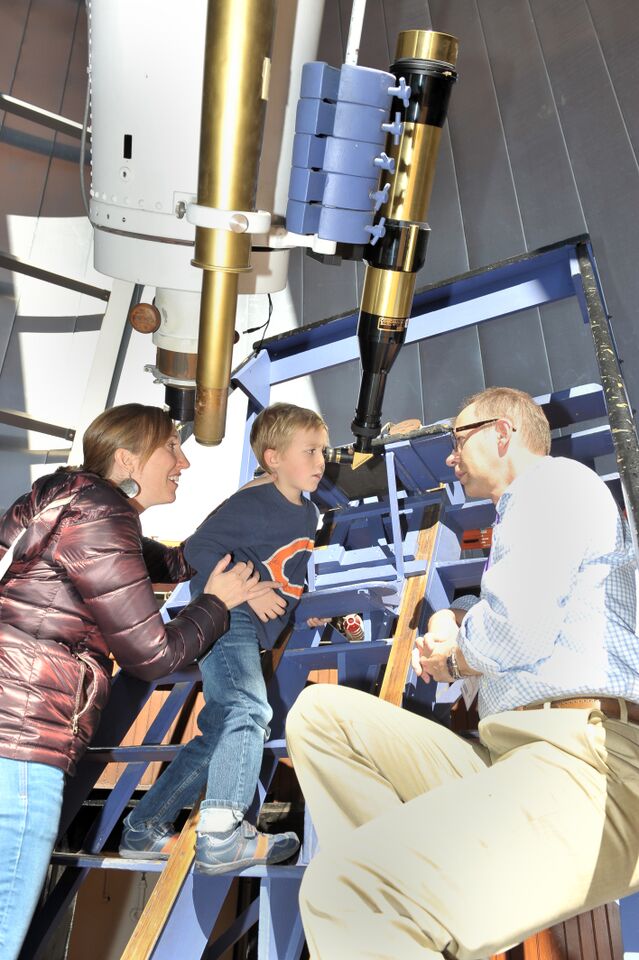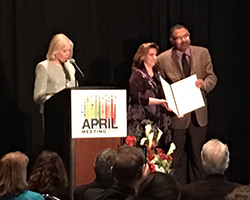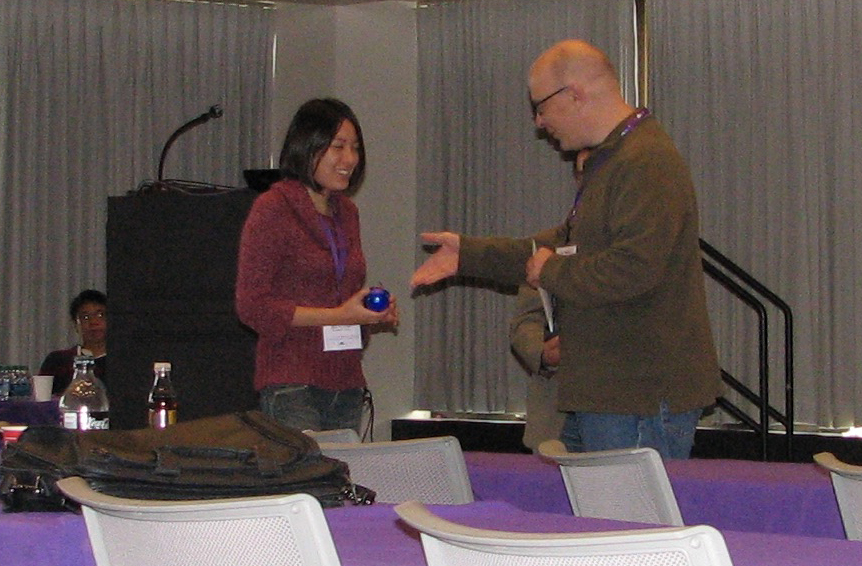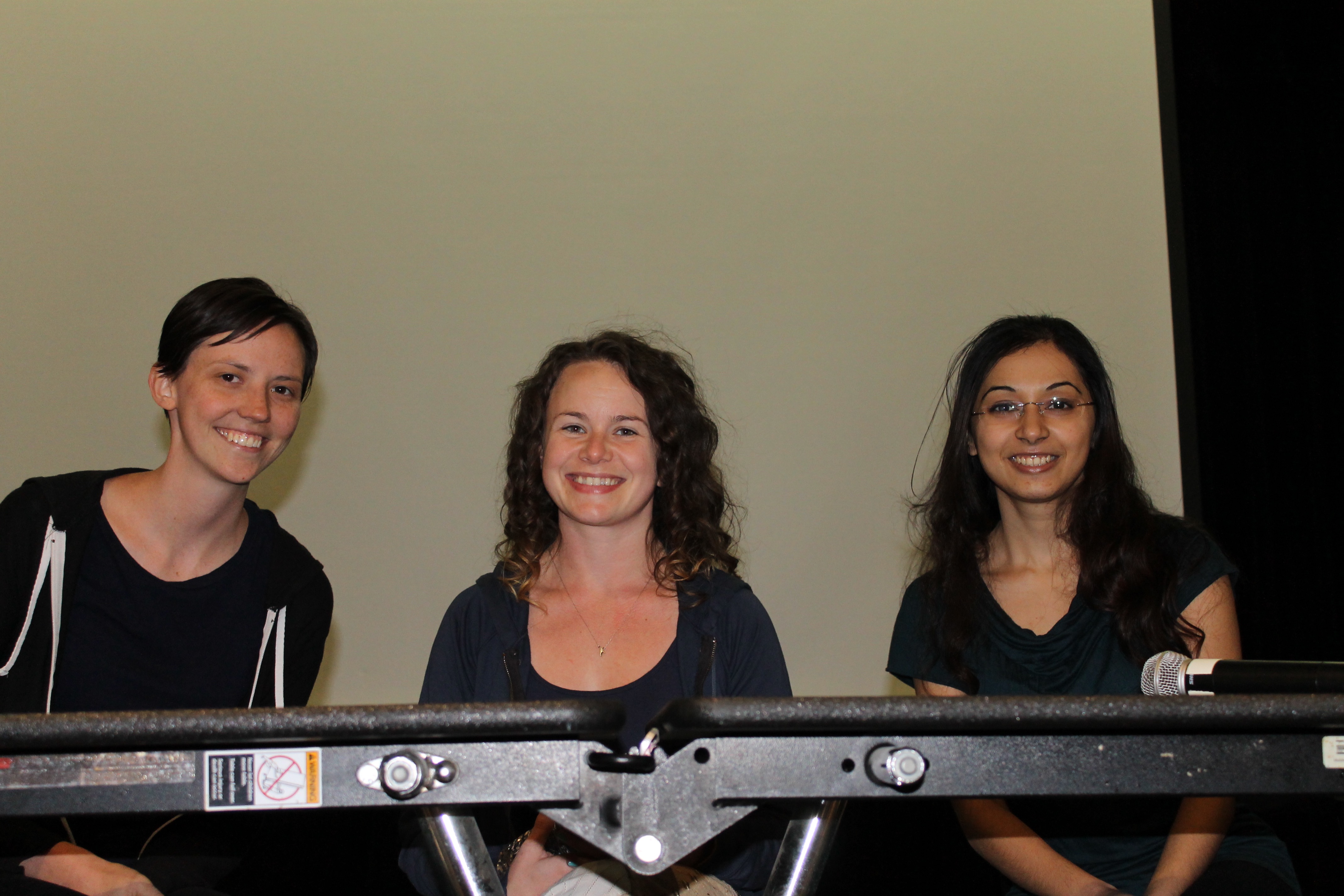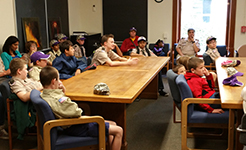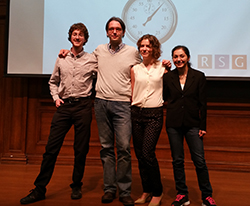August 2016
| ||||||||||||||||
In mid-August, CIERA welcomed ten researchers from a variety of institutions for a three-day bootcamp for the Global Network of Optical Magnetometers for Exotic physics (GNOME). The training was organized by CIERA Postdoctoral Associate, Chris Pankow, and covered the analysis of time series data, Bayesian statistical analysis, and discussion of exotic physics sources. There is a wide array of potential sources of physics beyond the standard model, and a wide variety of them are detectable with very sensitive magnetometers. With this bootcamp, GNOME will be applying powerful data analysis methods to extract and characterize potential signals from deep within the intrinsic noise of these instruments. | ||||||||||||||||
CIERAs Research Experience for Undergraduates (REU) program provides students with the chance to pursue an astrophysics-based interdisciplinary research project in collaboration with Northwestern faculty. This year, nine exceptional students were selected and funded by NSF to spend their summer researching at the University, and learning technical skills that will serve them in their future academic and professional lives. On August 11th, 2016, eight of these nine summer researchers presented the findings of their investigations at the REUs programs final poster session. The session served as an opportunity for the students to share their hard work with their peers, and to practice their public speaking before more formal presentations at the Alder Planetarium, and a meeting of the American Astronomical Society. The poster session also provided a chance for the students to celebrate their achievements and friendship, with an ice cream party immediately following the event. Congratulations to these talented students on all they have accomplished!
Not Pictured: Yuqi Yun (Advisor: Vicky Kalogera) | ||||||||||||||||
On August 4th, 2016 CIERAs ISG summer researchers presented their findings to a group of faculty and peers. The Illinois Space Grant (ISG) is an annual educational grant awarded by NASA to Northwestern University through the Illinois Space Grant Consortium to outstanding undergraduates. This year the award allowed for seven talented new researchers to spend their summer at CIERA, working closely with an advising professor in one of several areas of space sciences and astrophysics. Congratulations to these remarkable students on all of their hard work! Please click the photos above to view a larger image. | ||||||||||||||||
| CIERA's 2016 Summer Student Researchers
For the summer of 2016, 39 summer stundents worked closely with researchers at CIERA. Several of these students were funded through an educational grant awarded by NASA to Northwestern University through the Illinois Space Grant Consortium.
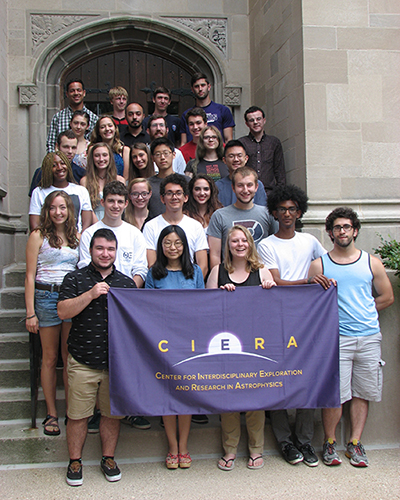
5th Row - Harriet Colie, Sophie Haight, Ahsan Anjum, Cobi Rabinowitz, Robert Doane-Soloman, Newlin Weatherford 4th Row - Kyle Condron, Tatum Ewing, Katie Barnhart 3rd Row - Noelle McGee, Laura Malis, Andrew Kim, Jason Yang 2nd Row - Beverly Lowell, Luke Cailan , Elizabeth Cunningham, Noah Rivera, Lupe Macintosh, Josh Fuhrman 1st Row - Sam Imperato, Yuqi Yun, Valerie Becker, Abraham Teklu, Joe Arroyo | ||||||||||||||||
With a new generation of ground and space-based surveys generating petabytes of data per year, together with the increasing complexity of data coming from these instruments, astrophysics is becoming ever more dependent on developments in computing. There is, however, a disconnect between the skills that are needed for an era rich in data and those that we teach to incoming graduate students and early-career postdocs. The Data Science Fellowship Program was created to bridge this gap and provide a supplemental educational program to prepare early-career scientists for data-rich astronomy. The LSSTC Data Science Fellowship program is designed to teach skills required for LSST (Large Synoptic Survey Telescope) science that are not easily addressed by current astrophysics programs. It consists of three, one-week schools per year over a two-year period. For their initial week of training, the inaugural cohort of graduate students were hosted by CIERA at Northwestern August 1-5, with a trip to Adler Planetarium on the final afternoon of the week. There were 16 students from around the globe, plus 4 Northwestern students who are auditing the week of training. Program Leadership: The LSSTC Data Science Fellowship Program is made possible by the generous support of the LSST Corporation, the Data Science Initiative (DSI) at Northwestern, and CIERA. | ||||||||||||||||
July 2016
| ||||||||||||||||
Over the last 15 years, Northwesterns Department of Physics and Astronomy has emerged as a force in the field, with new researchers pushing innovative projects, compelling collaborations and groundbreaking discoveries that have elevated the standing and reach of the department. The possibilities for Physics and Astronomy seem much broader and much greater than I imagined when I came here [in 2000], confirms professor and department chairman Michael Schmitt. Indeed, everything and anything seems possible today. Read the full story in Weinberg News. | ||||||||||||||||
On the morning of February 11th 2016, people around the world congregated in conference rooms to watch a press conference that would change the face of modern physics. Months earlier, rumors started flying that the Laser Interferometer Gravitational-wave Observatory, or LIGO, had at last found something. Though such a monumental discovery is kept quiet until the scientists involved are completely confident in their analysis, the overabundance of closed-door meetings and irregular busyness of LIGO scientists indicated something was afoot. (At Northwesterns center for astrophysical research, the champagne glasses outside the viewing room that February morning were also a dead giveaway.) I am a scientist in the LIGO collaboration and knew well what was to be announced, but excitement still pumped through my veins as I headed to the viewing room. Continue to Science in Societys HELIX Magazine for the full article. | ||||||||||||||||
CIERA is pleased to announce the following awards: Summer Undergraduate Research Grant Recipients: NASA Illinois Space Grant Consortium Recipients Physics & Astronomy Undergraduate Awards for 2016 Congratulations all! | ||||||||||||||||
Continuing an annual tradition, Northwestern University's CIERA Research Experience for Undergraduate (REU) program hosted a live, online Career Panel discussion in July for our summer undergraduate researchers, hosted by the director of the CIERA REU program, Aaron Geller. View the archived panel discussion video. Astronomers develop an incredibly useful (and employable!) set of skills while pursuing their degree and research interests. The latest stats indicate that while ~75% of recent astronomy Ph.D.s accepted a postdoc position, over 80% eventually pursue careers outside the tenure track faculty route. Panelists: Aaron Geller is director of the Northwestern CIERA REU program and an NSF Astronomy & Astrophysics Postdoctoral Fellow (AAPF) jointly appointed at Northwestern and the Adler Planetarium. Geller develops astronomy visualizations and researches star clusters and stellar evolution. His interests include dynamics in a star cluster environment and the binary and multiple stars and planetary systems that live inside, and how star clusters contribute to the production of exotic systems. | ||||||||||||||||
On July 13, 2016 six graduate students from CIERA participated in Astronomy Night at Ravinia, which was organized by Northwestern alumnus Dr. Donald Lubowich, Coordinator of Astronomy Outreach at Hofstra University. The Chicago Symphony Orchestra performed a number of pieces inspired by the solar system, and concert-goers also got to view a high-definition movie from NASA on the big screens. Astronomy enthusiasts brought their telescopes and set them up along the sculpture path outside the tent area.... Read the full article and view our Ravinia photo gallery. | ||||||||||||||||
Data science is affecting every aspect of Northwesterns learning and research enterprises among other things, leading to breakthroughs in precision medicine; contributing to a revolution in astronomy, with profound insights about the universe; transforming the scope and depth of social science research with significant policy implications; changing the way humanities scholarship is conducted and fueling research about consumer behavior that is affecting how companies do business locally and globally. The tsunami of data pouring into Northwestern today, powered by extraordinary recent advances in computer speed and capacity, is transforming scholarship and changing the way this institution conducts research, teaches students, solves problems, promotes learning and extends the frontiers of human knowledge. Read the full Northwestern News Story. | ||||||||||||||||
June 2016
| ||||||||||||||||
The new window onto the universe just opened a little bit wider. For the second time in history, an international team of scientists and engineers, including CIERA astrophysicists, has detected gravitational waves -- ripples in the fabric of spacetime -- and a pair of colliding black holes. LIGOs first detection of gravitational waves and merging black holes occurred Sept. 14, 2015 (see CIERA news item) -- an event that made headlines worldwide, confirming a major prediction of Albert Einsteins 1915 general theory of relativity. The field of gravitational-wave astronomy was born with a little chirp heard on Earth that forever changed the way we see the universe. The second detection occurred Dec. 26, 2015, and is known as the Boxing Day event (after the holiday celebrated in the U.K.). Read the full Northwestern News story. CIERA director Vicky Kalogera, a member of the LIGO Scientific Collaboration (LSC), attended the American Astronomical Society meeting and was present at the media briefing where the news was announced. Dr. Kalogera leads Northwesterns LSC group, which includes Shane L. Larson, research associate professor of physics and astronomy at Northwestern and an astronomer at the Adler Planetarium in Chicago, and Selim Shahriar, professor of electrical engineering and computer science at Northwesterns McCormick School of Engineering. View the recording of the American Astronomical Society press conference where this discovery was announced. Go to the AAS Press Conference Webcast Archive and click on Latest News from the LIGO Scientific Collaboration under the AAS 228 San Diego meeting (12-16 June 2016). At minute 32, when the Question & Answer section begins, Dr. Kalogera is cited as the expert on astrophysics. ROUNDUP OF MEDIA MENTIONS OF CIERA/NORTHWESTERN Business Insider: "A year ago, scientists cracked one of Einstein's greatest mysteries now a bizarre new form of astronomy is emerging" by Dave Mosher. | ||||||||||||||||
In a new study, CIERA astrophysics show their theoretical predictions last year were correct: The historic merger of two massive black holes detected Sept. 14, 2015, could easily have been formed through dynamic interactions in the star-dense core of an old globular cluster. These binary black holes are born in the chaotic mosh pit of a globular cluster, kicked out of the cluster and then eventually merge into one black hole. This theory, known as dynamical formation, is one of two The paper, titled Dynamical Formation of the GW150914 Binary Black Hole, was published June 10 by The Astrophysical Journal Letters. It was coauthored by CIERAs Fred Rasio, Carl Rodriguez, Sourav Chatterjee, and Vicky Kalogera, as well as Carl-Johan Haster of the University of Birmingham. View the recording of the American Astronomical Society press conference where this discovery was announced. Click on the AAS image in this article (left), or go to the AAS Press Conference Webcast Archive, and click on Black Holes and Gamma-Ray Bursts under the AAS 228 San Diego meeting (12-16 June 2016). View Carl Rodriguezs TEDx Talk on Binary Black Holes. ROUNDUP OF MEDIA MENTIONS OF CIERA/NORTHWESTERN | ||||||||||||||||
Northwestern Engineering's Jian Cao has received the 2016 Frederick W. Taylor Research Medal from the Society of Manufacturing Engineers (SME). The Taylor Medal is the highest honor given by SME to a researcher in the broad manufacturing field. Cao is the first woman to receive the prestigious research award since it was established in 1957. Cao is Associate Vice President for Research in Northwesterns Office for Research and professor in the Departments of Mechanical Engineering and (by courtesy) Civil and Environmental Engineering. She is an interdisciplinary faculty member with CIERA, as well as ex-officio member of CIERAs Advisory Board. Cao is also director of the Northwestern Initiative for Manufacturing Science and Innovation (NIMSI). Read the Full McCormick News Article. | On June 1st the Office of STEM Education Partnerships (OSEP) hosted the 9th Annual High School Project Showcase as part of Northwestern University's Undergraduate Research and Arts Exposition. The high school students completed projects as part of their research and project-based math and science curricula at their schools, through independent research courses or clubs, or entirely independently. During the day the high school students got to present their work, but they also had the opportunity to network with Northwestern undergraduate and graduate students. CIERAs Katie Breivik, Adam Dempsey, Zachary Hafen, and Niharika Sravan all served as judges at the showcase. The showcase is a part of OSEP's work to engage in long-term partnerships with Chicago-area high schools to improve the quality of science instruction, increase the number of students achieving high science standards, and prepare students for college-level coursework. 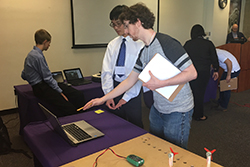 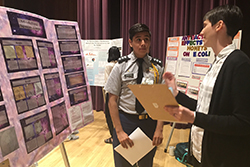 | |||||||||||||||
May 2016
| ||||||||||||||||
Nearly 70 people from the Northwestern and Evanston area communities showed up despite a terrific thunderstorm to the Firehouse Grill May 25 to talk about the black hole at the core of the Milky Way Galaxy. Professor Farhad Yusef-Zadeh shared the evidence of this black hole, which is 4 million times the mass of the Sun, and its fascinating daily activity that helps young stars form despite the harsh environment. Northwestern's Science Café is an informal forum for the local community of science enthusiasts to gather and learn about interesting topics. This talk was the last one of the year stay tuned for new talks in September! Science Café is sponsored by Northwesterns Vice President of Information Technology, Northwesterns Vice President for Research, and NU Chapter 22 of Sigma Xi. | ||||||||||||||||
An infrared camera called the High-resolution Airborne Wideband Camera-Plus (HAWC+) was installed on the Stratospheric Observatory for Infrared Astronomy, SOFIA, this spring. This is the only currently operating astronomical camera that makes images using far-infrared light, allowing studies of low-temperature early stages of star and planet formation. Professor Giles Novak, CIERA Postdoctoral Fellow Fabio Santos, and Visiting Scholar Marc Berthoud are part of the team led by NASAs Jet Propulsion Laboratory that developed the instrument. (Drs. Santos and Berthoud are pictured with the SOFIA plane, left.) Learn more about the SOFIA flying observatory. | ||||||||||||||||
Emceed by WBEZs Nerdette Podcast hosts Tricia Bobeda and Greta Johnson, five of Chicagos Arts and Sciences experts got just five minutes to spark imaginations with en-lightning ideas on May 10th. The five innovators included: Paul Sereno (University of Chicago), Audrey Petty (Illinois Humanities Council), Vicky Kalogera (CIERA-Northwestern University), Miguel De Baca (Lake Forest College), and Eugenia Cheng (The Art Institute of Chicago). Co-hosted by The Phi Beta Kappa Society & The Phi Beta Kappa Association of the Chicago Area and held at the Chicago History Museum, over 200 members of the public enjoyed the talks, which were part of PBKs Arts & Sciences Cities of Distinction program. View all 5-minute videos from (En)Lightning Talks Chicago. | ||||||||||||||||
During his undergraduate career at Northwestern, Kyle Kremer combined his love of the planets and music into a dual physics and trumpet degree. Now a graduate student in the Physics & Astronomy department, he brought that love to the broader Northwestern community in the Solar System Symphony concert on May 24th. Astronomy visualizations were displayed on stage as the Bienen Brass Ensemble performed music from Gustav Holsts The Planets and Strauss Also sprach Zarathustra. The program also included the world premiere of Timothy Higgins' Sinfonietta. Afterwards, attendees had the opportunity to learn more about the solar system from CIERA researchers with a telescope viewing outside the Pick-Staiger venue on Arts Circle West. This isnt the first time Kremer has brought together music and science. He performed two science-themed music concerts with musicians from the Civic Orchestra of Chicago at Nettelhorst Elementary in the past year. The first concert was part of the school's "Science Night", and the second was for a school assembly that included over 300 attendees. Kremer hopes the May 24th event was the inaugural concert of a series of similar events, where he can continue to share his dual passions with the broader community. In 2012, he told Northwestern magazine that almost everyone loves thinking about astronomy, physically or philosophically.
Read the preview article in the Northwestern News. | ||||||||||||||||
Earlier this month Lois Trautvetter and Michelle Paulsen attended the NRT Teams Annual Meeting 2016, and Future STEM Leaders Conference in Washington DC. The events, both co-sponsored by the National Science Foundation and the University of Maryland, brought together students, faculty, and program coordinators from 18 NSF Research Traineeship teams across the country. The gatherings featured experts from academia, government and industry as they discussed the changing demands of STEM research and careers, the most promising innovations in training that have emerged in programs around the country, and the challenges of scaling up these innovations to transform graduate education across institutions and disciplines. Michelle and Lois joined these featured speakers to represent CIERA's IDEAS program. Michelle lead an interactive workshop during the meeting focused on effective science communication skills, while Lois spoke on a panel at the conference about recruitment and retention efforts based on research relating to the IDEAS project. Both connected with many people who were impressed with IDEAS, and who provided keen insight and information to help the program grow, and accomplish its future goals. Read the School of Education and Social Policy article here. | ||||||||||||||||
On May 9th, Dearborn Observatory welcomed visitors to view Mercury transiting the sun. Despite very cloudy conditions, over 40 people arrived throughout the morning. Kids had fun checking out the dome and telescope and talking with graduate students, who showed live-stream videos from other places in the world where the transit-viewing was clearer. A transit is the passage of a planet across the Sun's bright disk. When this happens, the planet can be seen as a small black dot slowly moving in an East-to-West direction in front of the Sun. The orbits of Mercury and Venus lie inside Earth's orbit, so they are the only planets which can pass between Earth and Sun to produce a transit. Its a relatively rare astronomical event. There are approximately 13 transits of Mercury each century. Lets hope for clear skies next time: November 11, 2019. | ||||||||||||||||
April 29th marked the first STEM-CON at the College of DuPage. The Science, Technology, Engineering and Math Convention kicked off with a bang, welcoming more than 1000 participants of all ages to explore subjects from airplanes and NASCAR, to DNA and nanotechnology. STEM-CON was free and open to the public, and featured an exciting line-up of speakers, but the real fun happened in conventions many booths. Presenters set up dozens of engaging, high-quality, experiments and demonstrations to inform, entertain, and inspire an interest in the fields of math and science. Among these presenters was CIERAs own Aaron Geller. Geller, and colleague Sara Grady, from Northwesterns Science in Society research center, hosted a booth entitled When Art and Science Meet. Their booth focused on astronomy images Geller won awards for in the 2014 and 2015 Northwestern Scientific Images Contests . The duo also led demonstrations of transiting planets and crater formation to large groups of enthusiastic learners. The event was a huge success, and the College of DuPage is already planning to host STEM-CON as an annual event. For more information about the convention and many more pictures, visit the STEM-CON Website.
| ||||||||||||||||
When graduate student Katie Breivik isnt doing research about gravitational waves, shes lending her science research skills to the classroom. This spring at the Salt Lake Center for Science Education, Katie gave two talks to groups of students about astronomy. She spoke to a group of middle schoolers about modern astronomy and the electromagnetic spectrum, and spoke to high schoolers about gravitational waves. She also talked with an AP Physics class about what its like to be a graduate student in physics and astronomy. This isnt the first time Katie has brought her science skills to the classroom. The previous month, Katie helped the Science Olympiad team at Highland Middle School in Libertyville, IL. There, Katie worked with two groups of students to help prepare for events in Stellar Astrophysics and Wave Mechanics. I really like interacting with students because it gives me a chance to show them that scientists are people like them, just with a bit more school under our belts. Its especially fun to interact with high school students because I can remember how I felt trying to figure out what I wanted to do with my life in high school. I had no idea what a grad student even did, or that there were jobs in astronomy anymore, so I love being able to be an example of a real astrophysicist to the students I talk to, Katie says. | ||||||||||||||||
Yuri Milner, a Russian entrepreneur, venture capitalist, and physicist, is giving $3 million as a Special Breakthrough Prize in Fundamental Physics to honor the scientists and engineers involved in the gravitational-wave discovery announced earlier this year. $1 million will be shared equally by the three LIGO founders, Ronald Drever, Kip Thorne, and Rainer Weiss, and the remaining $2 million will be shared equally by the 1,012 contributors. This special award can be conferred by the organization’s selection committee at any time (outside of and in addition to the ordinary annual nomination process) to recognize an extraordinary scientific achievement. Mr. Milner, one of the founders of the Breakthrough Prizes organization, said, “The creative powers of a unique genius, many great scientists, and the universe itself, have come together to make a perfect science story.” A second prestigious honor, the Gruber Foundation's $500,000 Cosmology Prize, will be conferred to the founders and the entire LIGO team for "pursuing a vision to observe the universe in gravitational waves, leading to a first detection that emanated from the collision of two black holes." The prize citation continues, "This remarkable event provided the first glimpse into the strong-gravity regime of Einstein's theory of general relativity that governs the dynamics of black holes, giving direct evidence for their existence, and demonstrating that their nature is consistent with the predictions of general relativity." CIERAs director, Vicky Kalogera, led the astrophysical interpretation of the discovery for the LIGO collaboration. Over the years her group pioneered ways of making detection source rate predictions and the development of methods for extracting information from gravitational-wave signals from binaries of spinning compact objects. The following Northwestern members are co-authors on the discovery paper and hence awardees: Faculty: Postdoctoral Fellows: Graduate Students: Undergraduate Students: Read the full announcement on BreakthroughPrize.org. Check out the Northwestern News story. | ||||||||||||||||
April 2016
| ||||||||||||||||
Graduate student Michael Zevin interacted with about 30 visiting students in two sessions during Take Our Daughters & Sons to Work Day 2016 at Norris University Center. He explained how much can be learned about our universe using light, even light invisible to humans, and showcased Northwesterns historic Dearborn Telescope. The students used spectral tubes and diffraction gratings to explore how light can tell us what makes up galaxies billions of lightyears away. Mike also introduced the concept of spacetime and the recent observation of gravitational waves to the young enthusiasts! | ||||||||||||||||
Representatives from the National Science Foundation Mathematical and Physical Sciences (NSF MPS) Directorate came to Northwestern April 21st in a site visit organized by Northwesterns Office for Research. The directorate is visiting a select number of institutions in 2016 to better understand the scientific opportunities, research landscape, and workforces they impact. Graduate students Zach Hafen, Carl Rodriguez, and Niharika Sravan were among the 18 students invited to present posters in the Silverman Hall atrium as part of the visit. In addition to talking about their research, they were asked to articulate a narrative that captured its broader impacts: not only scientific opportunities, but potential future career and societal opportunities related to their work. Physics and Astronomy faculty were also well represented, with presentations by CIERAs Vicky Kalogera and Yoram Lithwick as well as Enectali Figueroa-Feliciano, Jens Koch, and Adilson Motter. Hosted by VP for Research Jay Walsh, the directorate representatives were NSF MPS Assistant Director Fleming Crim, Deputy Director Deborah Lockhart, and Senior Advisor Clark Cooper. | ||||||||||||||||
To celebrate and highlight advanced research computing at Northwestern, the third annual Computational Research Day was held on April 19th. Highlights of the day included presentations from Northwestern researchers, guest speakers, the Visualization Challenge sponsored by NVIDIA and a poster session sponsored by CIERA and NICO (Northwestern Institute on Complex Systems). CIERA Postdoctoral Fellow Alex Richings gave a talk entitled, "Simulating Galaxies and Large-scale Structure in the Universe.” Physics and Astronomy graduate students Niharika Sravan, Adam Dempsey, and Mike Zevin presented posters. Mike (pictured) took home the first prize of $1500 toward the conference of his choice for his poster on Gravity Spy and LIGO. Assistant Director John Everett helped organize the poster session and postdoc Ben Nelson served as one of the judges. Michelle Paulsen (pictured), CIERA’s Director of Education, Outreach, and Communications Programs presented Computational Research Day is hosted by Northwestern Information Technology and sponsored in conjunction with Weinberg College of Arts and Sciences, McCormick School of Engineering and Applied Science, Kellogg School of Management, Feinberg School of Medicine, Office for Research, and Northwestern University Libraries. | ||||||||||||||||
Carl Rodriguez, a Ph.D. candidate in Physics and Astronomy, was chosen to present his talk, "Listening to Einsteins Final Symphony, as part of this years TEDxNorthwesternU event, whose theme was "Beyond Boundaries. Carls TEDx talk described how binary black holes are forged in the cores of star clusters, and how we can hear them collide with a new type of telescope designed to listen to tiny vibrations in the fabric of spacetime itself. Originally from Shreveport, Louisiana, Carl earned his B.A. in Physics from Reed College in Portland, Oregon, before starting his Ph.D. at Northwestern. He is a recipient of a Graduate Research Fellowship from the National Science Foundation, and will be joining MIT next year as a Pappalardo Fellow in Physics. When not working on black holes, Carl can be found either climbing or backpacking through the wilderness. View Carl's TEDx Talk on Youtube. Learn more about TEDxNorthwesternU. | ||||||||||||||||
CIERA Postdoctoral Fellow Laura Fissel will be leaving Chicago for Virginia next year, as one of the National Radio Astronomy Observatorys (NRAOs) Jansky fellows. Jansky fellows are awarded to a handful of promising young researchers whose interests are aligned with that of the NRAO. As a Jansky fellow, Laura will continue her work with the BLAST (the Balloon-borne Large Aperture Submillimeter Telescope) project, a telescope that measures electromagnetic radiation in star-forming clouds of dust and gas. At CIERA, Laura has been involved in both engineering the control systems for the BLAST telescope, as well as analyzing the data that the telescope has collected. Working on that project, Laura has become an expert in understanding magnetic fields that are involved in star formation, using the polarization of light as a key indicator of those magnetic fields. (Polarization is quality of light that our eyes cannot detect; in short, light can be thought of as a wave, and if you think of that light wave as a wave on a string, then the polarization just refers to whether the string is oscillating up and down or side to side. You make use of this each time you wear polarized sunglasses: light reflected from a flat surface is mostly light that oscillates in a particular way; your sunglasses block light that is polarized in one direction, cutting down the glare.) While playing a key role in the BLAST mission, Laura is also interested in the new Atacama Large Millimeter/submillimeter Array (or ALMA) project, a group of radio telescopes located in Chile, which combines light from 66 radio dishes to produce high-quality images. ALMA promises a new look at star-forming regions. Significantly, the NRAO (in Charlottesville, Virginia) is the North American center for the ALMA project.
Though Laura will miss working closely with the CIERA group that is working on the BLAST project, she is excited for this next step. Hopefully Ill learn a lot and Ill be able to work with some other people, and learn different techniques and get different ideas for studying star formation and magnetic fields in general. Giles Novak, CIERA-affiliated professor and a star formation researcher on the BLAST project, said that Lauras expertise will be missed. "Laura's contributions to the BLAST experiment have been tremendous - ranging from making split-second decisions in Antarctica during remote debugging of problems with our balloon-borne telescope, to patiently digging through our terabytes of data to find the signature of magnetic structure in star forming clouds, he said. I'm thrilled that she will be able to continue and expand her work on balloon-borne polarimetry after taking up her position as a Jansky Fellow at Charlottesville." Congratulations Laura! | ||||||||||||||||
Roger F. Malina shared the story of his career, including the strong influence of his father, who became a full-time artist following a successful scientific career, at CIERA’s Spring Interdisciplinary Colloquium on April 7th. Dr. Malina is a Distinguished Professor of Arts and Technology, and Professor of Physics, from the University of Texas at Dallas. Dr. Malina is the founder of ArtSciLab, a transdisciplinary research lab at UT Dallas. He shared a wide array of examples of collaborations between physicists and engineers, art historians and musicians, designers and doctors. He talked about the many challenges to these collaborations, but emphasized the innovations that they can produce. As Executive Editor of Leonardo, the leading international peer-reviewed journal on the use of contemporary science and technology in the arts and music, Dr. Malina also discussed his publishing initiatives and his work to create permanent records of research being done today. Learn more about the ArtSciLab at UT Dallas and the Leonardo Journal from the MIT Press.
| ||||||||||||||||
March 2016
| ||||||||||||||||
Dr. Kalogeras leadership in the recent first detection of gravitational waves was cited as one of the reasons students view her as a top professor at Northwestern. The author of the article, Northwestern sophomore Meghan Gresk, explained how the list was formulated: We basically started with talking to students and seeing which professors came up a lot in conversation, and then from those we picked a combination of people with interesting findings, teaching styles, personalities, awards, that sort of thing. Although the article is not meant to be a ranking so much as just a celebration of 10 great Northwestern professors, because obviously there are so many more." College Magazine, written by students for students, features rankings of U.S. institutions, college guides, academic advice, college prep, career advice, student health, and other tips for current undergraduates. Read about all Top 10 Professors at Northwestern. | ||||||||||||||||
More than 80 people from the Northwestern and Evanston area communities came to the Firehouse Grill March 23 to talk about the dawn of gravitational wave astronomy. Research Assoc. Professor Shane Larson shared the modern description of gravity, explained what gravitational waves are, how we hope to measure them, and what we hope to learn from their detection. Northwestern's Science Café is an informal forum for the local community of science enthusiasts to gather and learn about interesting topics. Science Café is sponsored by Northwesterns Vice President of Information Technology, Northwesterns Vice President for Research, and NU Chapter 22 of Sigma Xi. | ||||||||||||||||
CIERA graduate students and postdocs have initiated a new event series to share astronomy news and information with the public. The inaugural gathering took place March 10th at Smylie Brothers Brewing Co. in Evanston. An overview of hot topics in astronomy kicked-off the evening, followed by a rousing round of astronomy-based trivia, then a scientific talk on the exciting new detection of gravitational waves. Another round of trivia and a discussion of common astronomical misconceptions wrapped up the evening. The trivia winner took home a Galileoscope! Over 75 people attended the event.
Stay in touch with Astronomy on Tap Chicago via Facebook and Twitter. | ||||||||||||||||
February 2016
| ||||||||||||||||
CIERA director Vicky Kalogera joined Wendy Freedman and Angela Olinto, astrophysicists from the University of Chicago, in a "Panel on Space" moderated by Adler Planetarium's CEO Michelle Larson on February 22. The scientists spoke to an audience of 150 Girl Scouts, other middle- and high school-age girls, and members of The Chicago Network, an organization of Chicago's most distinguished professional women.
Please see the Chicago Tribune's story about The Chicago Network's Panel on Space. Learn more about The Chicago Network. |
||||||||||||||||
Chicago Tonight, a weeknight television news magazine on WTTW Channel 11 hosted by Phil Ponce, featured Vicky Kalogera and Shane Larson on February 15th. Drs. Kalogera and Larson discussed the announcement of the first detection of gravitational waves by LIGO. View the video from WTTW's Chicago Tonight and read highlights from the interview.
|
||||||||||||||||
On February 11, 2016 the National Science Foundation and the LIGO Scientific Collaboration (LSC) announced that their scientists successfully, for the first time, directly detected gravitational waves - or ripples in the fabric of spacetime - using the Laser Interferometer Gravitational-wave Observatory (LIGO). Through their dedicated research, CIERA faculty, postdocs, graduate and undergraduate students contributed to this momentous scientific discovery! CIERA director Vicky Kalogera, a member of the LSC, attended the press conference held at the National Press Club in Washington, DC where this tremendous news was announced. Dr. Kalogera leads Northwesterns LSC group, which includes Shane L. Larson, research associate professor of physics and astronomy at Northwestern and an astronomer at the Adler Planetarium in Chicago, and Selim Shahriar, professor of electrical engineering and computer science at Northwesterns McCormick School of Engineering.
|
||||||||||||||||
Our largest ever “Graduate Student Speaker Series” event was held at Vernon Hills High School on February 9th. Over 70 students, teachers, and school administrators attended the event to learn more about the latest in science research and to discuss bringing hands-on inquiry lessons connected to the research into high school curricula. Graduate student presenters were: Fernando Castro (Materials Science and Engineering), Alicia McGeachy (Chemistry), Jessica Stark (Chemical and Biological Engineering), Nancy Auyeung (Interdisciplinary Biological Sciences), Victoria Weidner (Chemistry), and CIERA’s own Zachary Hafen (Physics and Astronomy). Learn more about the Graduate Student Speaker Series program at the GS3 web site. |
||||||||||||||||
Thanks to significant recent advances in high contrast imaging techniques, the next generation of space and ground telescopes will have the capability to image habitable planets around nearby stars. Space telescopes operating at visible wavelength can deliver the contrast level necessary to image Earth-like planets around nearby Sun-like stars. The next generation of telescopes (25-40m diameter) offer the angular resolution to resolve the habitable zones of nearby M-type stars and image habitable planets around these stars. Both approaches share similar fundamental challenges and technical solutions, yet will provide valuable complementary measurements. Dr. Guyon described current efforts to develop the high contrast imaging technologies, and show how the Subaru Extreme-AO (SCExAO) instrument on the Subaru Telescope 8-m telescope is playing a key role as a prototyping/technology validation platform.
| ||||||||||||||||
January 2016
| ||||||||||||||||
At this month's meeting of the American Astronomical Society, Eryn Cangi was awarded a Chambliss Astronomy Achievement Student Award. This honor is given to recognize exemplary research by students who present at one of the poster sessions at the meetings of the AAS. More than 200 students entered this year's competition and about 60% were undergraduates like Eryn. There were approximately 200 judges. This was the 227th meeting of the AAS, held in Kissimmee, Florida. Read the AAS Press Release about the Chambliss Awards. In the summer of 2015, Eryn participated in CIERA's Research Experience for Undergraduates program, where she worked with Northwestern's Daniel Abrams, who served as her research mentor. Read more about CIERA's REU program and visit Eryn's web site for more information about her project. Congratulations, Eryn! |
||||||||||||||||
Using observations by the Hubble Space Telescope, an international research team, including Aaron Geller and Claude-André Faucher-Giguère from Northwestern-CIERA and astronomers from the Kavli Institute for Astronomy and Astrophysics, has for the first time found young populations of stars within globular clusters that have apparently developed courtesy of star-forming gas flowing in from outside of the clusters themselves. Read the Full Northwestern News Story
|
||||||||||||||||
Thank you for making 2015's Einstein Evenings such a great success! We are happy to announce a continuation of public evening astronomy talks at Dearborn Observatory: CIERA Astronomer Evenings. On the last Friday of the month throughout 2016, we will discuss the concept of light as a cosmic messenger, and introduce the history and technology of optical telescopes. At these events, you will have the opportunity to meet and interact with CIERA postdoctoral associates, graduate researchers, and undergraduate students. They will discuss their research, share some exciting visualizations and hands-on activities, and answer your questions! These special evenings will take place at the Dearborn Observatory on Northwestern's Evanston campus from 8:00pm - 10:00pm. We look forward to seeing you there. CIERA Astronomer Evenings web site
|
||||||||||||||||
The Council of the American Astronomical Society (AAS) voted to take on the leadership of the WorldWide Telescope (WWT) project at the AAS winter meeting in Kissimmee, Florida. Doug Roberts, Adjunct Associate Professor of Physics & Astronomy at Northwestern and CIERA member, led the WWT Planning Task Force and was in charge of preparing the proposal to the Council. Roberts was the Chair of the WWT Planning Task Force, which was supported by the National Science Foundation (NSF). Various programs at CIERA have effectively used WWT, including outreach activities, such as Girls do Hack, Expanding Your Horizon, where middle and high school students create their own tours of the universe. WWT has been used in undergraduate classes as well, such as ASTRO 130 on the Solar System. Additionally, WWT has been used to create a video abstracts to accompany published papers, see an example: https://www.youtube.com/watch?v=zYk1-lsVFDc. Now that the AAS is supporting WWT, CIERA staff will continue to extend its functionality and use in various outreach, education and research activities and are excited to see where the program goes now that it is under the AAS! |
||||||||||||||||
Northwestern & CIERA Graduate Student Niharika Sravan returned to her hometown in eastern India last week to teach a one-week winter school that introduced high-school students to Computational Astrophysics. Forty students and six teachers at the Hill Top School in Jamshedpur, India, gained firsthand experience in working with state-of-the-art computational research tools for numerical modeling, data visualization, analysis and scripting. The course was developed with Senior HPC Specialist Pascal Paschos from Northwestern's Research Computing Services part of NIT. Paschos helped the students connect to Northwestern’s Quest system, a high performing computational system that allowed them to develop experience with using state-of-the-art tools. In the 5-day course, students learned the basics of astrophysics theory and modeling with Python, culminating in a project where students were able to use their new skills and equipment to answer a question they had about the sun. Sravan had always been interested in outreach and communicating with people about science, but it wasn’t until she became involved in the “Reach For the Stars” program six months ago that she began to do so in a classroom setting. “Reach For the Stars” is a CIERA and Northwestern GK-12 program, supported by the NSF, that pairs graduate students fellows with K-12 classrooms to help them learn how to communicate their research. Sravan said that Reach for the Stars gave her the time and resources to create the program for the Hill Top School, as well as the background with which to compare her experiences. “I haven’t been in the Indian education system for a while now, so I could contrast the experience with Indian and American high schools,” she said. “It was a very good learning experience for me. I could view it objectively, and I had a good experience learning the benefits of being in the American education experience.” Sravan and Paschos conducted a question and answer session via Skype during the students' graduation. They included both science and technology topics. This Q&A served not only as an example of the indispensible coupling of these areas, but also underlined the fact that technology itself enabled this communication across thousands of miles, fostering scientific curiousity in young minds at a global scale. According to the students in the course, the experience was out of this world. “I firmly believe that this course is very important for students all over India,” said one student in the exit surveys. “This kind of course truly exposes us to the whole new world of computers, supercomputers, and stars. The way in which we were taught was brilliant and easily understood the aspects of the course. It was truly an exhilarating experience and we want more of such courses.” | ||||||||||||||||
In 2015 Northwestern was awarded one of the first National Science Foundation Research Traineeship (NRT) grants in data-enabled science and engineering. This multi-million dollar grant is launching the IDEAS (Interdisciplinary Data-Driven Discovery in Earth and Astrophysical Sciences) program within CIERA. IDEAS is a multi-faceted program designed for masters and PhD graduate students in a variety of departments. As part of their education and training, graduate students will take specific coursework leading to a certificate in integrated data science granted by The Graduate School at Northwestern University. To complete the full traineeship, students will participate in summer school activities focused on data visualizations and computer programming, engage in science communication workshops, participate in the development of a citizen science project related to their research focus, earn an internship opportunity, and have the chance to participate in other data science-focused activities that will increase their professional connections and strengths necessary for successful careers in academia as well as the professional sector. Learn more at the IDEAS web site. | ||||||||||||||||
December 2015
|
||||||||||||||||
On December 4th, CIERA received a visit from a fellow of the American Association for the Advancement of Science (AAAS). In June, Jeremy Ward was selected by the Materials Research Society (MRS) and the Minerals, Metals & Materials Society (TMS) of the AAAS to serve a one-year term working as a special legislative assistant on the staff of Illinois Senator Dick Durbin. As an AAAS Science & Technology Policy Fellow, Jeremy liaises on issues related to higher education, science and technology, and consumer protection. During his visit to CIERA, he met with graduate students to hear about their work in Illinois classrooms and visited Northwestern's Visualization Wall, where he viewed movies drawn from CIERA research. | ||||||||||||||||
November 2015
|
||||||||||||||||
Congratulations to CIERA Members and Professors Giles Novak (Physics & Astronomy) and Brad Sageman (Earth & Planetary Sciences) for being nominated by their students to the 2015 Associated Student Government Faculty Honor Roll! Physics & Astronomy Senior Lecturer Deborah Brown and Distinguished Senior Lecturer Andy Rivers were also named to the Faculty Honor Roll. This hand-picked list is developed every year by students to recognize exceptional teaching by professors in their classes, and exceptional work by administrators in caring for students. View the complete Faculty Honor Roll on the Associated Student Government Facebook page. Pictured: Giles Novak with an undergraduate student at the South Pole. (National Science Foundation) | ||||||||||||||||
On November 20th, a NASA program called Physics of the Cosmos co-sponsored its first Google Hangout in partnership with the "Future in Space" hangout series produced by the American Astronomical Society and the American Astronautical Society. Participants Shane Larson (CIERA-Northwestern), Joey Shapiro-Key (U. Texas Pan American), and Ira Thorpe (NASA/GSFC) joined host Tony Darnell (STScI) in a conversation about gravitational wave detectors, sources, and science. View the recorded program on YouTube. | ||||||||||||||||
Each year, staff members from Northwestern's Weinberg College of Arts & Sciences organize a series of faculty talks given especially for staff. This allows staff to learn directly from the source about the work that faculty do at our institution every day. On November 12th, CIERA's Shane Larson spoke to a group of 25 NU staffers from across Weinberg with his presentation, "Whispers from the Cosmos." He shared his enthusiasm as both an amature astronomer and a professional astrophysicist, walking the audience through the past and into the future of the science of gravitational waves. View the full schedule: Weinberg Science Salon & Humanities Hour 2015-2016. | ||||||||||||||||
| ||||||||||||||||
We are often told that General Relativity tells us that the gravitational field is nothing but an aspect of spacetime structure: gravitation supposedly is geometry. Modern textbooks claim that this is a direct result of the theory. However, recent historical research shows that Einstein himself did not believe this; indeed, he actively opposed this interpretation of General Relativity.
| ||||||||||||||||
On November 10th, graduate student Katie Breivik led a stargazing activity for about twenty girls, ages 6-12, in Lake Forest, IL. The girls are part of a local outdoors group, called Adventure Guides, that seeks to enhance the bonds between dads and daughters. The girls love astronomy!
| ||||||||||||||||
Michelle Paulsen, Program Director of Reach for the Stars, IDEAS, and RSG Research Communication Program, and graduate student Katie Breivik, met U.S. congressman Bob Dold on Monday, November 10th. The event was a Leadership Awards Ceremony in Lake Forest at Elaway Farms at which Lisa Backus, a Deerfield High School science teacher, was a finalist for an Excellent Educator Award through Dold's office. Paulsen nominated Ms. Backus for this honor for her work with GS3, the Graduate Student Speaker Series, in which Breivik participates. Paulsen and Breivik talked with the congressman about science, education, and CIERA's programs and Paulsen will continue to engage with Congressman Dold's office on the topic of computer science education in Illinois. Pictured: Bob Dold and Graduate Student Katie Breivik | ||||||||||||||||
New Horizons is NASAs historic mission to explore the Pluto system and the Kuiper Belt. The fastest spacecraft ever launched, the New Horizons left Earth on January 19, 2006. It made the first exploration of the Pluto system3 billion miles from Earthin 2015, culminating with a highly successful flyby inside the orbits of all five of Plutos moons on July 14th. The spacecraft carries a sophisticated payload of imagers and other scientific instruments that were used to revolutionize our knowledge of Pluto and its five moons.
| ||||||||||||||||
Dr. Vicky Kalogera, E.O. Haven Professor and Associate Chair, Department of Physics & Astronomy, has been elected to the Large Synoptic Survey Telescope Corporation’s (LSSTC) Executive Board of Directors. In this capacity, Dr. Kalogera will participate in the oversight and administration of the Corporation. Learn about the Large Synoptic Survey Telescope.
| ||||||||||||||||
October 2015
|
||||||||||||||||
Casey Chu, an NSF REU student at CIERA during the 2015 summer, presented his summer research at a poster session for the Research Experiences for Undergraduates (REU) Symposium on October 25 & 26 in Arlington, Virginia. The REU Symposium is held annually by the Council on Undergraduate Research, and invites a select group of the top students participating in REU programs from across the country to showcase their work from the previous summer. Casey was nominated by Aaron Geller (REU director and Co-PI) and Vicky Kalogera (PI) for his research this summer at CIERA with professor Yoram Lithwick and postdoctoral fellow Fabio Antonini. At the symposium, Casey presented his poster titled, "Inferring the Gravitational Potential of the Milky Way," to several NSF program administrators as well as other REU students from across the nation. Learn about CIERA's National Science Foundation-funded Research Experience for Undergraduates program. Check out Casey Chu's research page! | ||||||||||||||||
For the first time, the Chicago Architecture Foundation expanded their annual Open House Chicago event to include buildings in Evanston; three Northwestern buildings were featured in Open House Chicago 2015: Charles Deering Library, Alice Millar Chapel, and Dearborn Observatory. The Observatory was open for the event from 1pm to 5pm on Sunday, October 18th. Visitors got a chance to walk through the building (built in 1889, and the oldest building of the three featured); many also observed the Sun through a 'spotting scope' mounted on the main telescope, as well as through a purpose-built solar telescope, also fixed to the side of the main telescope. 602 people visited Dearborn on that Sunday, creating a line that sometimes snaked its way from the second floor of Dearborn down to the first floor, and all of the way out to the front of the Observatory. We hope all of our visitors enjoyed their time at Dearborn! Learn more about the three Northwestern buildings in the Northwestern News story. Plan a visit to Dearborn Observatory or find out about the Chicago Architecture Foundation.Photo by Bruce Powell. | ||||||||||||||||
Dr. Vicky Kalogera, E.O. Haven Professor and Associate Chair, Department of Physics & Astronomy, has been awarded the 2016 Hans A. Bethe Prize from the American Physical Society (APS). The award recognizes outstanding work in theory, experiment or observation in the areas of astrophysics, nuclear physics, nuclear astrophysics or closely related fields. It is open to any scientist working in these areas, worldwide, and is presented annually by the APS divisions of astrophysics and nuclear physics. Dr. Kalogera will be honored with the Bethe prize at a recognition ceremony during the April, 2016 meeting of the APS. The Bethe is the only astrophysics prize within the APS. Dr. Kalogera's citation reads, “For key contributions to the study of the electromagnetic and gravitational wave radiation from binary compact objects, including the now-verified prediction that neutron star mergers produce short gamma-ray bursts that will be found in all galaxy types.” Go to the Northwestern News story on Dr. Kalogera's honor. | ||||||||||||||||
|
Shane Larson, Research Associate Professor and Astronomer at Adler Planetarium, has been elected a Fellow of the American Physical Society. Dr. Larson's citation commends him for "Impacting science and society through the integration of public engagement and research, and for empowering generations of future scientists by his example."
| ||||||||||||||||
| ||||||||||||||||
September 2015
|
||||||||||||||||
|
Despite intermittently cloudy skies, over 1,700 people joined CIERA faculty, staff, postdocs, and graduate students to watch the total lunar eclipse on Sunday night, September 27th, 2015. Setting up three telescopes on the top floor of the Segal Visitors Center on the south campus of Evanston, CIERA volunteers welcomed Northwestern students & staff and members of the public to take part in this event. Crowds cheered as the moon ducked out of the clouds just before the total eclipse, showing a reddish-orange face with only a small fraction of the surface still lit directly by the Sun; some enthusiasts stayed even until the end of the eclipse, watching the full moon re-appear. We were happy to be able to share the total lunar eclipse with so many friends! View the Northwestern News eclipse story and the Daily Northwestern eclipse story. | ||||||||||||||||
|
On September 22, CIERAs Katie Breivik, Maggie Morscher, and Niharika Sravan (pictured left to right) were invited by physics teacher Katie Page to speak at Prospect High School in Mt. Prospect, IL. Mrs. Page runs the Women in STEM club, which includes a speaker series aimed at inspiring young women to pursue their interests in the science fields. Each quarter, Mrs. Page invites a panel of guest speakers to come and talk to Prospect's high school girls about the speakers' educational backgrounds, professions, how they got into their STEM fields, and what its really like. View the Chicago Tribune story about the Prospect High School Women in STEM Club. | ||||||||||||||||
|
CIERA Director Vicky Kalogera has accepted an invitation to serve on the Committee on Astronomy and Astrophysics (CAA) of the National Research Council. The CAAs purpose is to support scientific progress in astronomy and astrophysics and assist the federal government in integrating and planning programs in these fields. It is a joint committee of the Space Studies Board and the Board on Physics and Astronomy under the National Academies of Sciences, Engineering, and Medicine in Washington, D.C. Dr. Kalogeras expertise in the origin and evolution of compact objects in stellar systems was cited as a meaningful addition to the CAA. Learn more about the Committee on Astronomy and Astrophysics. | ||||||||||||||||
|
For the third year in a row, NU Athletics invited Boy Scouts and their families to explore the wide variety of science, technology, engineering, and mathematics (STEM) research at Northwestern University. This year, as part of that program, about 70 people visited Dearborn Observatory on Saturday, September 12th. In Dearborn's classroom, graduate student Zach Hafen explained how we learn about galaxies by building computer simulations of them; then, everyone got a chance to see Dearborn's historic telescope, and view the Sun, helped by graduate student Matthew Rickert and CIERA Asst. Director of Operations John Everett. As usual with this very interactive group, we spent most of our time answering a wide variety of questions (from kids with ages of about 6 to about 35!) about how telescopes work, to what happened before the Big Bang. | ||||||||||||||||
|
Northwestern's RSG Program is a 10-week long course for graduate students and postdocs in various science disciplines. Through the program, these scientists learn how to effectively communicate the importance of their work with non-expert audiences outside of their fields. During the academic year, all program participants attend open lunchtime lectures on science communication. During the summer, selected students meet weekly for more focused workshops on communication skills as part of a larger curriculum. On September 11th, three graduate students and one postdoc from CIERA presented their work in RSG's "Seven Minutes of Science" symposium, hosted by program director, Michelle Paulsen. Pictured left to right: Zach Haven (Exploring the universe using virtual galaxies), Fabio Antonini (What is at the center of the Milky Way?), Fani Dosopoulou (When stars meet...), and Niharika Sravan (Big data astronomy: revealing the biography of supernovae). View the videos from Seven Minutes of Science! |
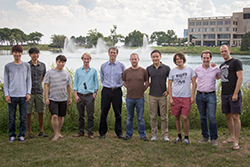
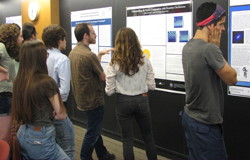
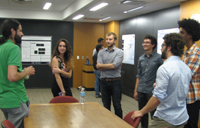
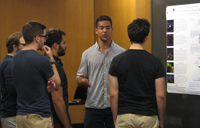

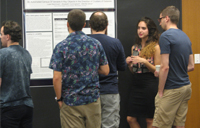
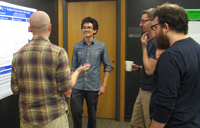
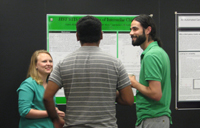
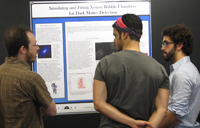
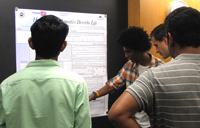

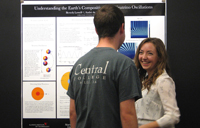
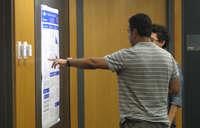
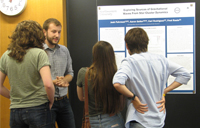
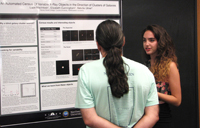









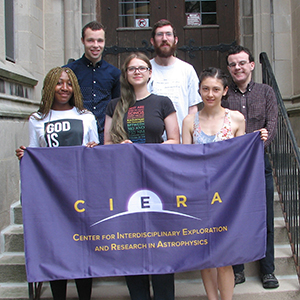
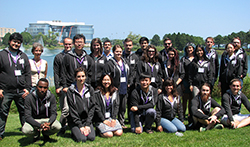
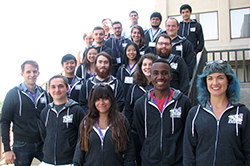

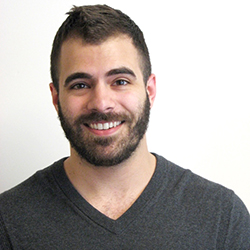
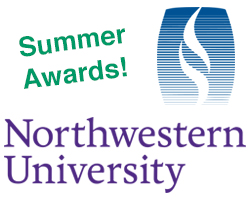
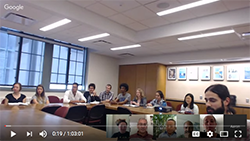
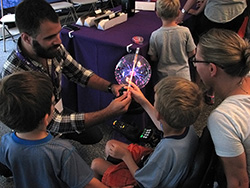

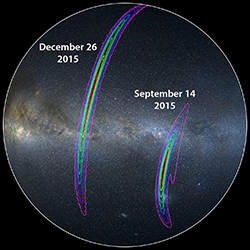
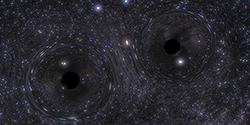

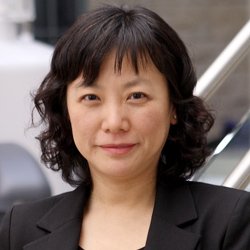
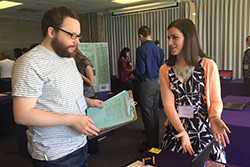
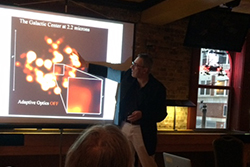
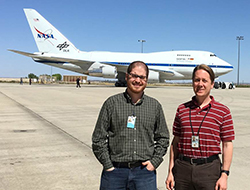
Lightning.jpg)
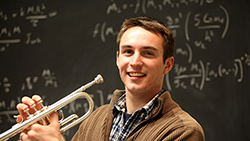
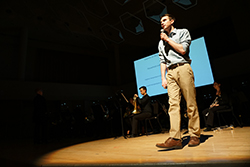
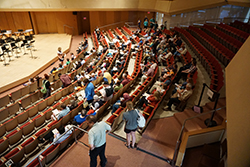
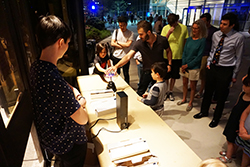
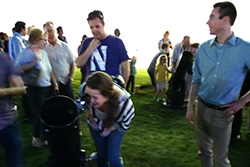
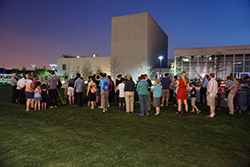
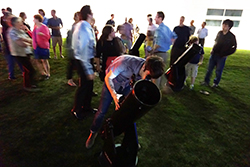
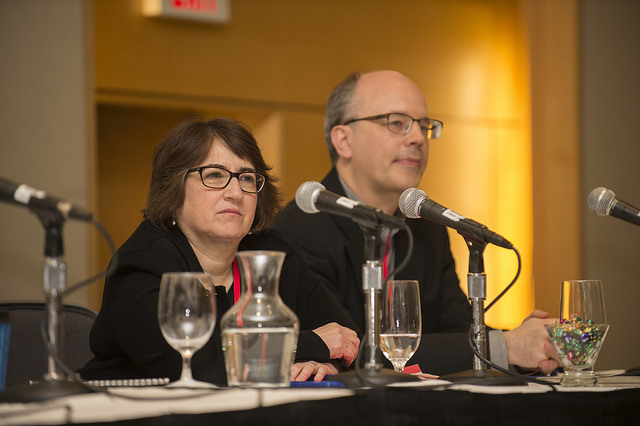


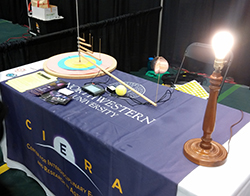
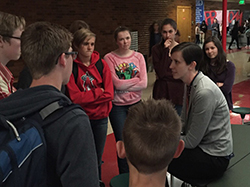


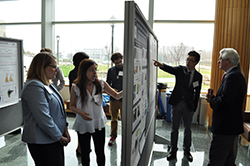
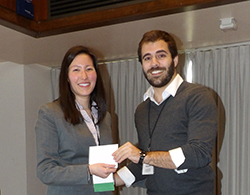
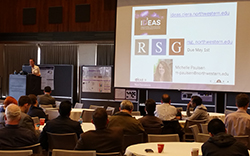 an introduction to the
an introduction to the 

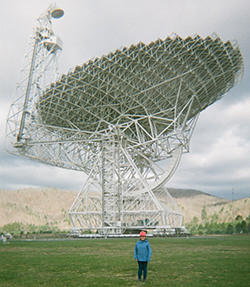 For Laura, having access to ALMA data as well as the BLAST data will give her an opportunity to study magnetic fields and clouds in star forming regions at both the small and large scale. BLAST is sensitive to magnetic fields in these star forming nurseries on many scales (both large and small), where as ALMA, with its amazing sensitivity and high resolution, can make incredibly detailed maps of even smaller regions, such as small clumps of gas and dust which will probably go on to form one stellar system.
For Laura, having access to ALMA data as well as the BLAST data will give her an opportunity to study magnetic fields and clouds in star forming regions at both the small and large scale. BLAST is sensitive to magnetic fields in these star forming nurseries on many scales (both large and small), where as ALMA, with its amazing sensitivity and high resolution, can make incredibly detailed maps of even smaller regions, such as small clumps of gas and dust which will probably go on to form one stellar system. 